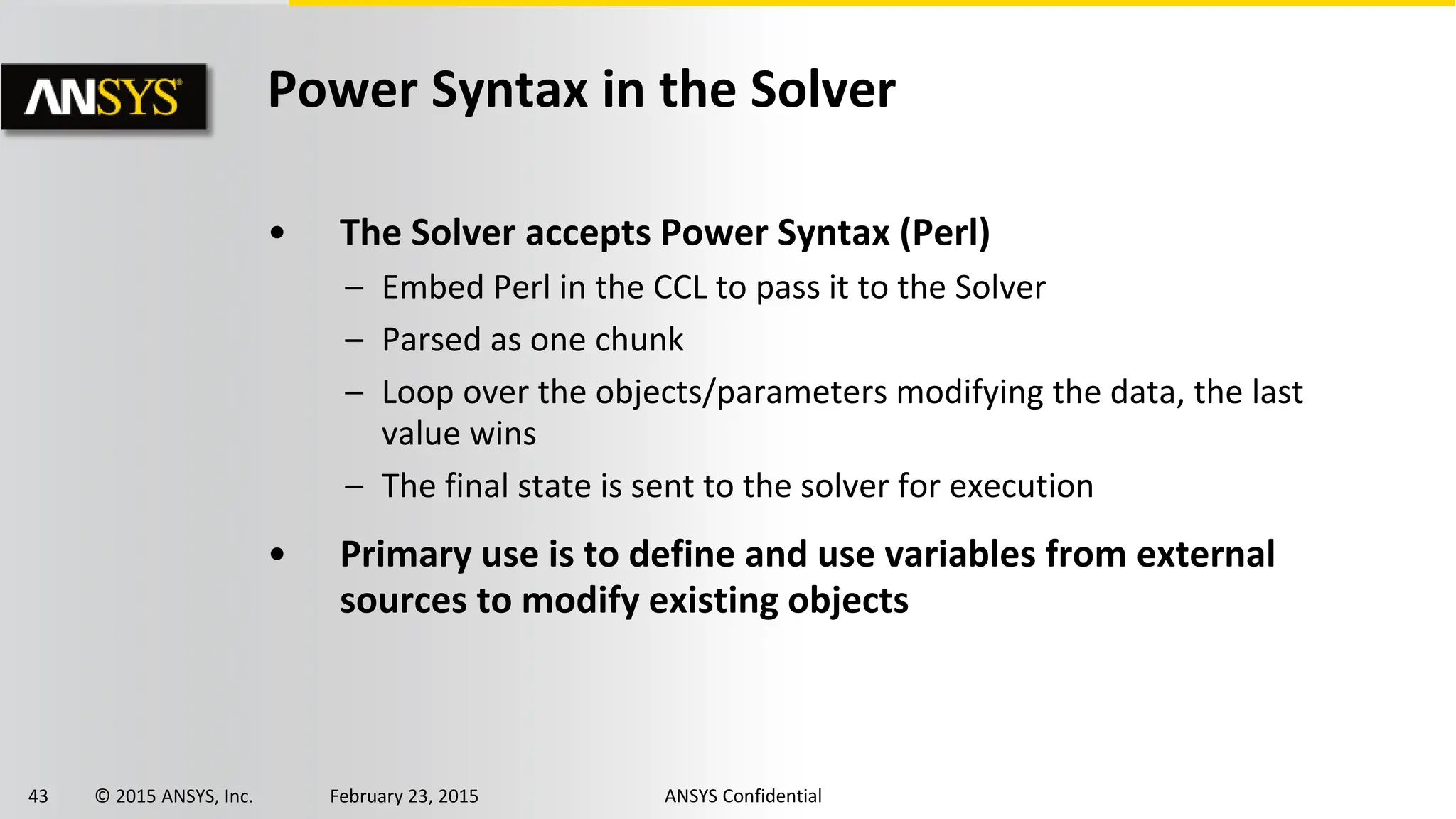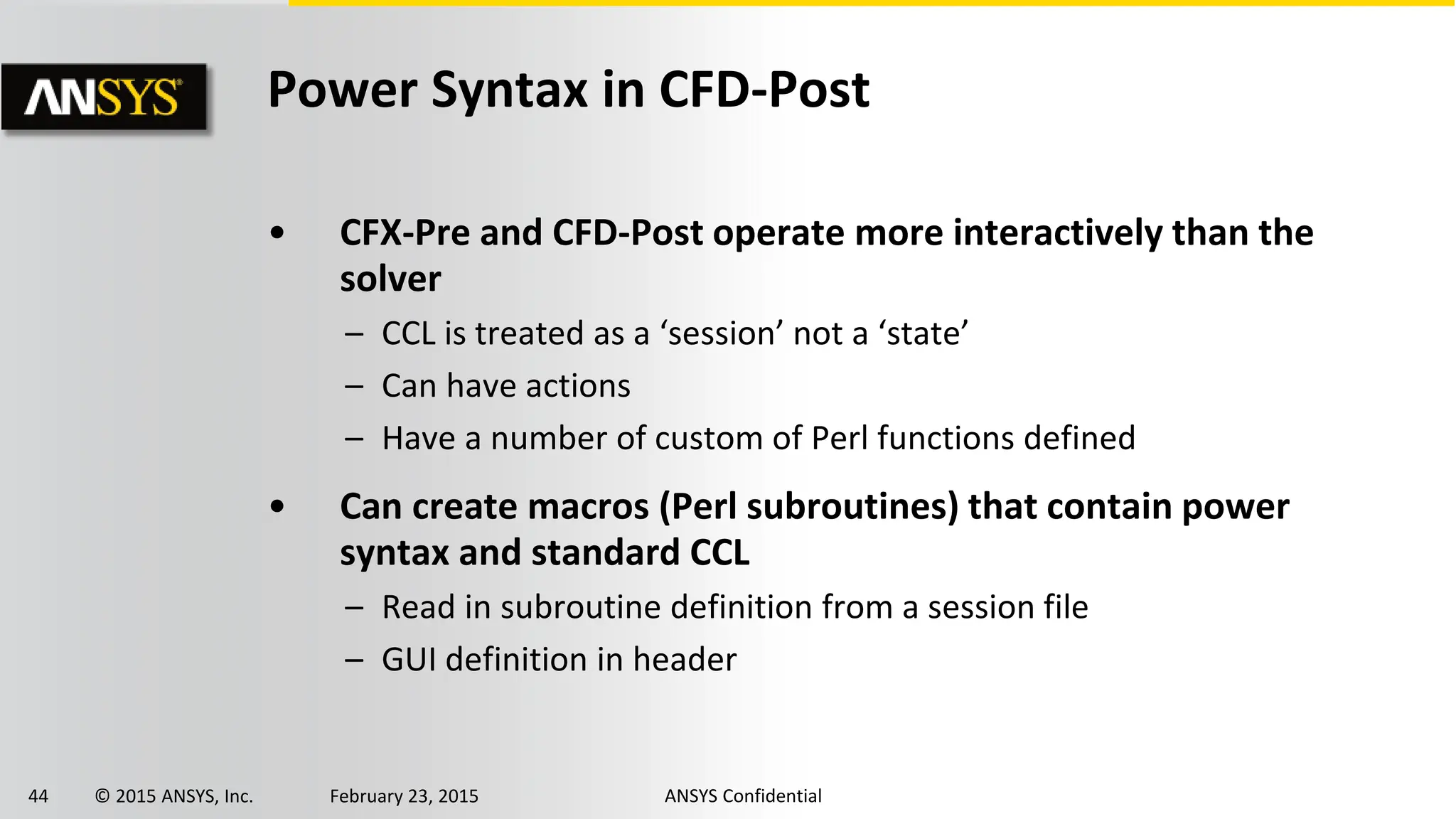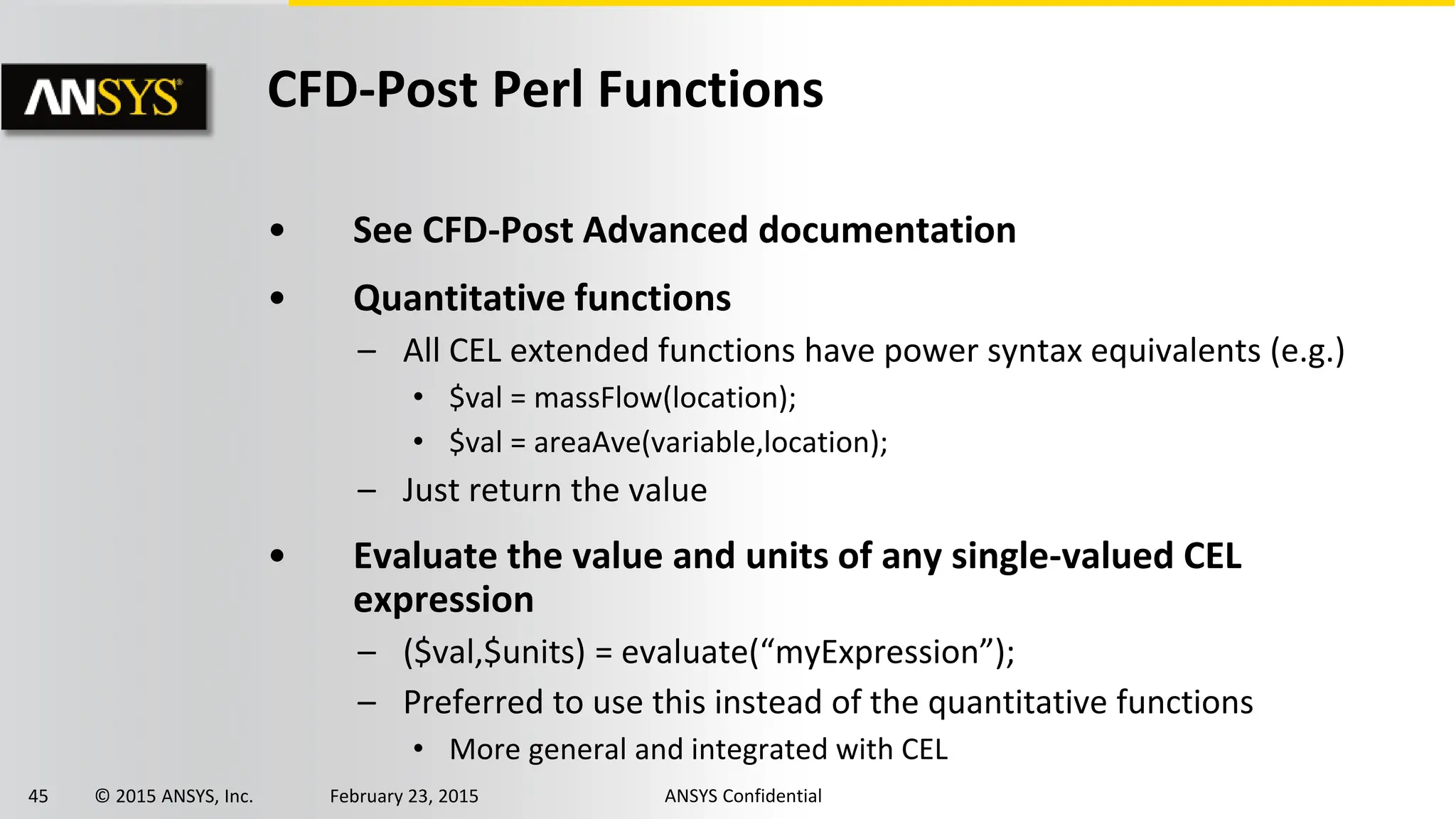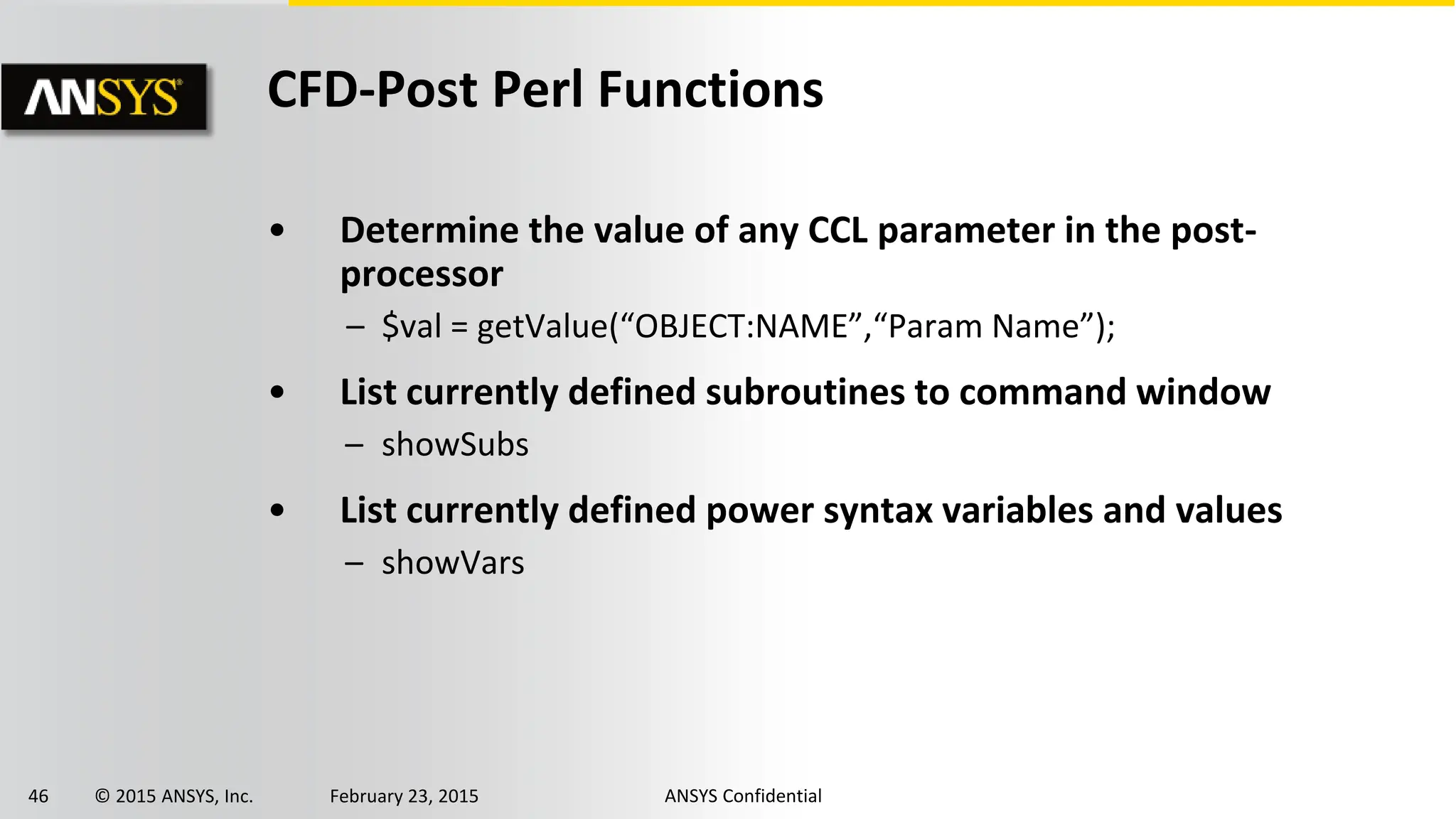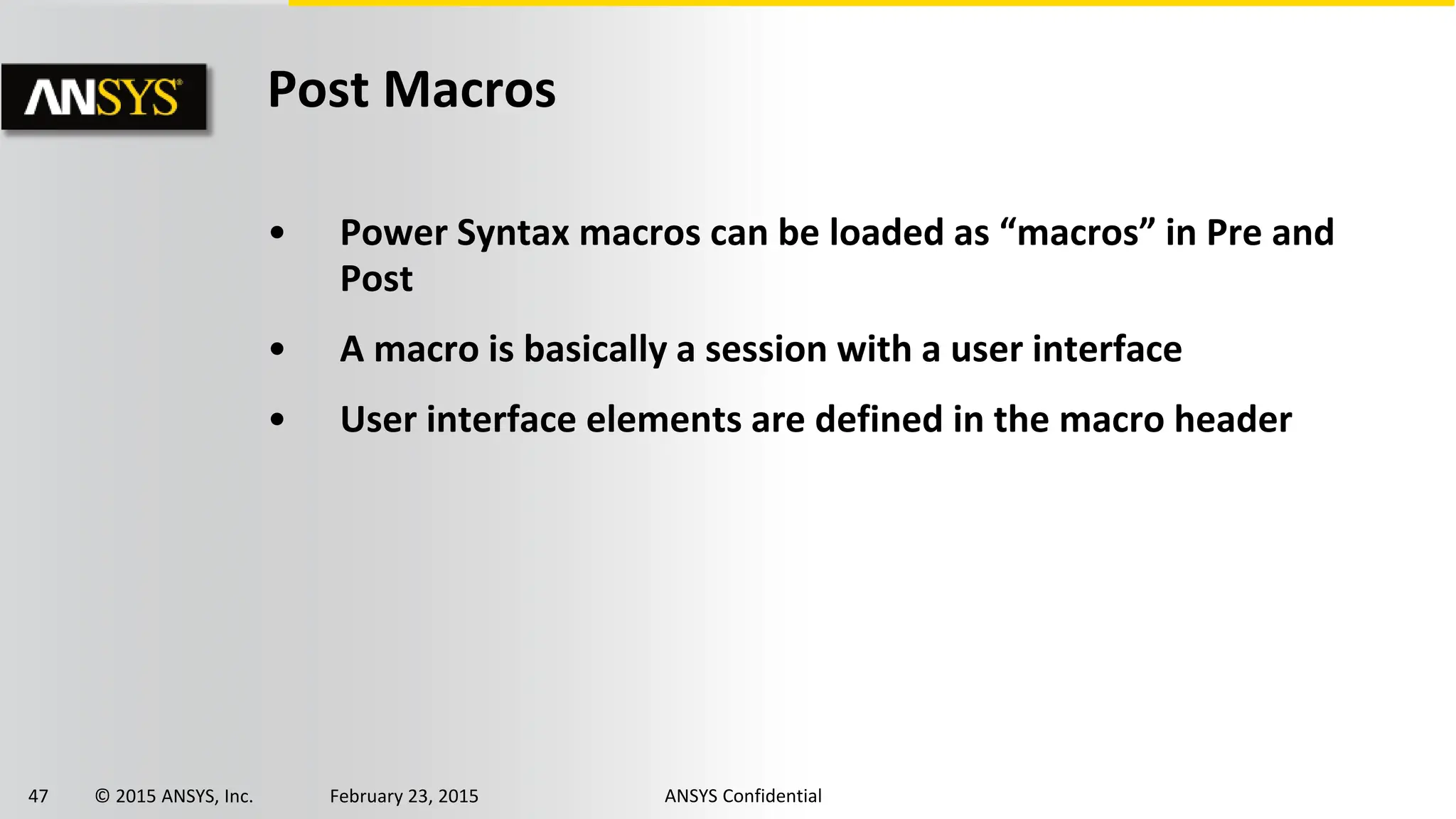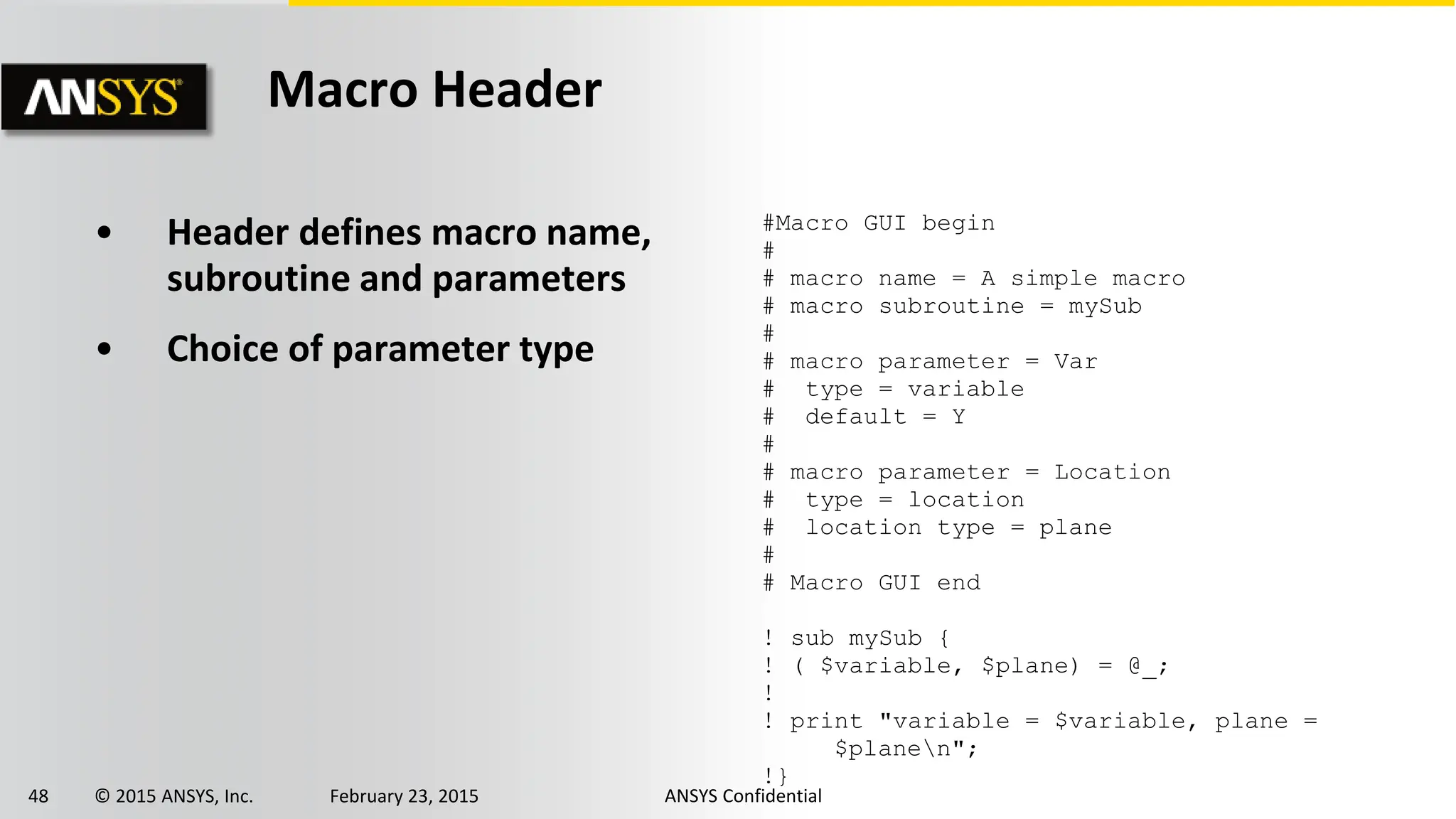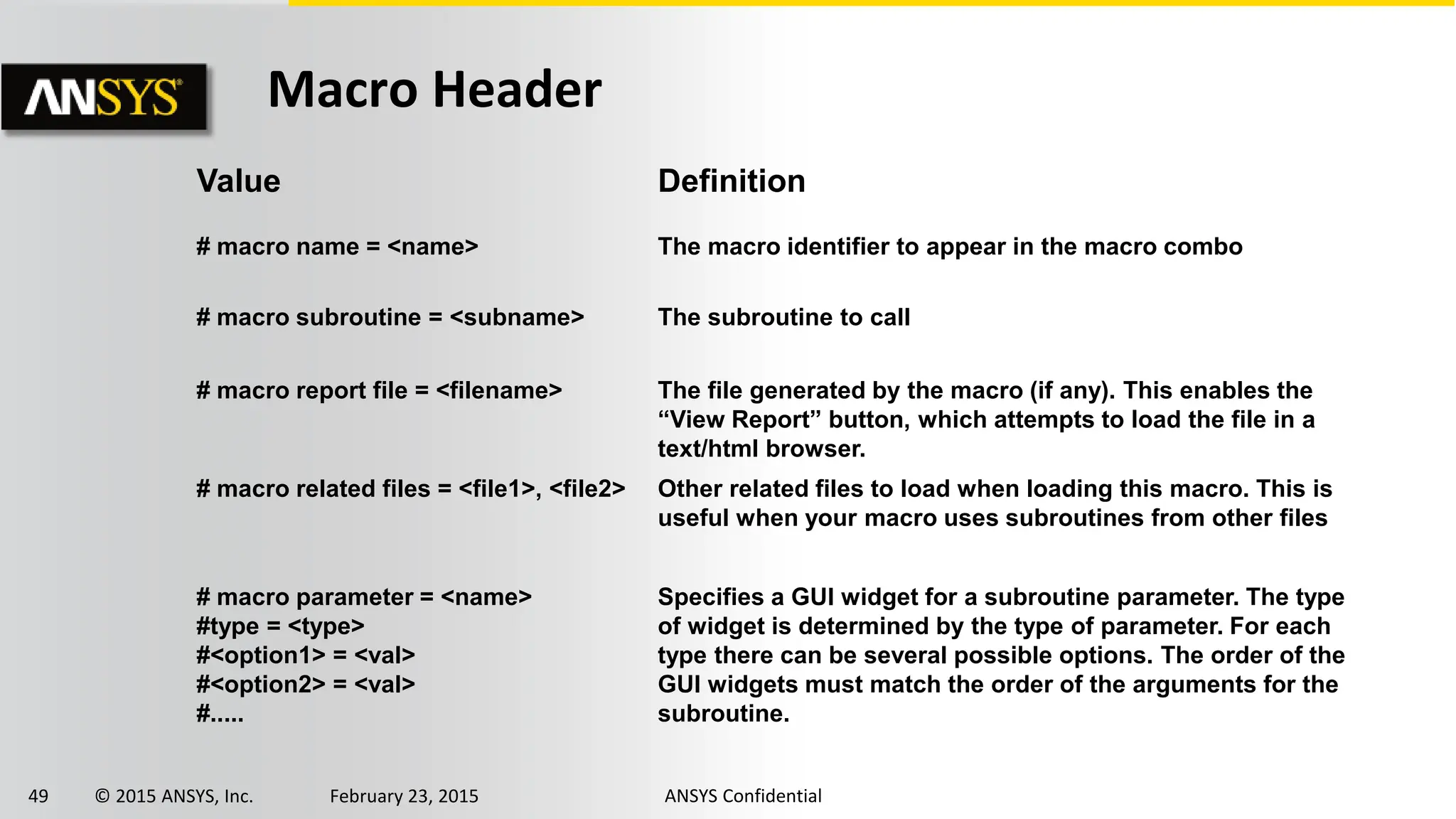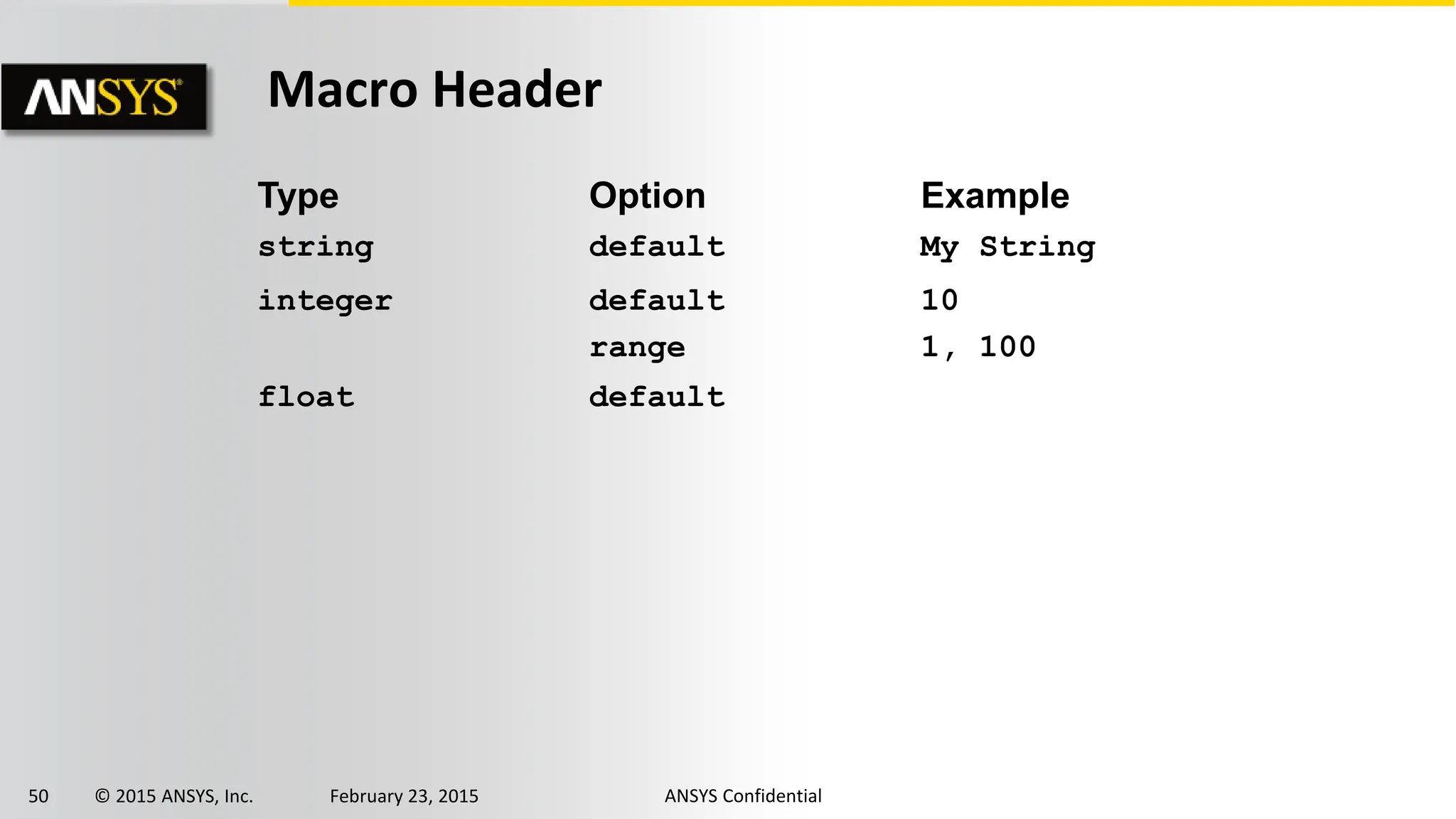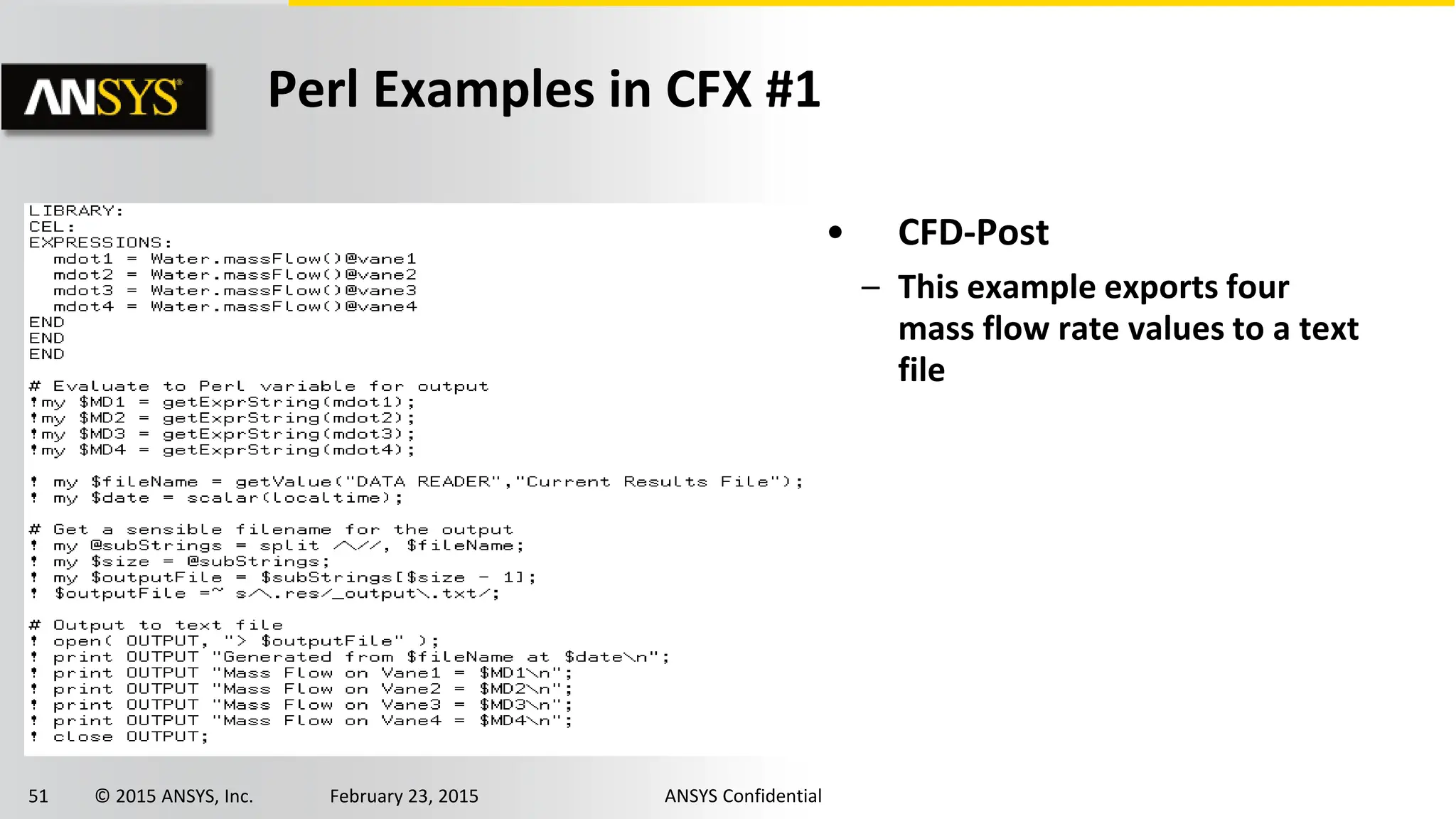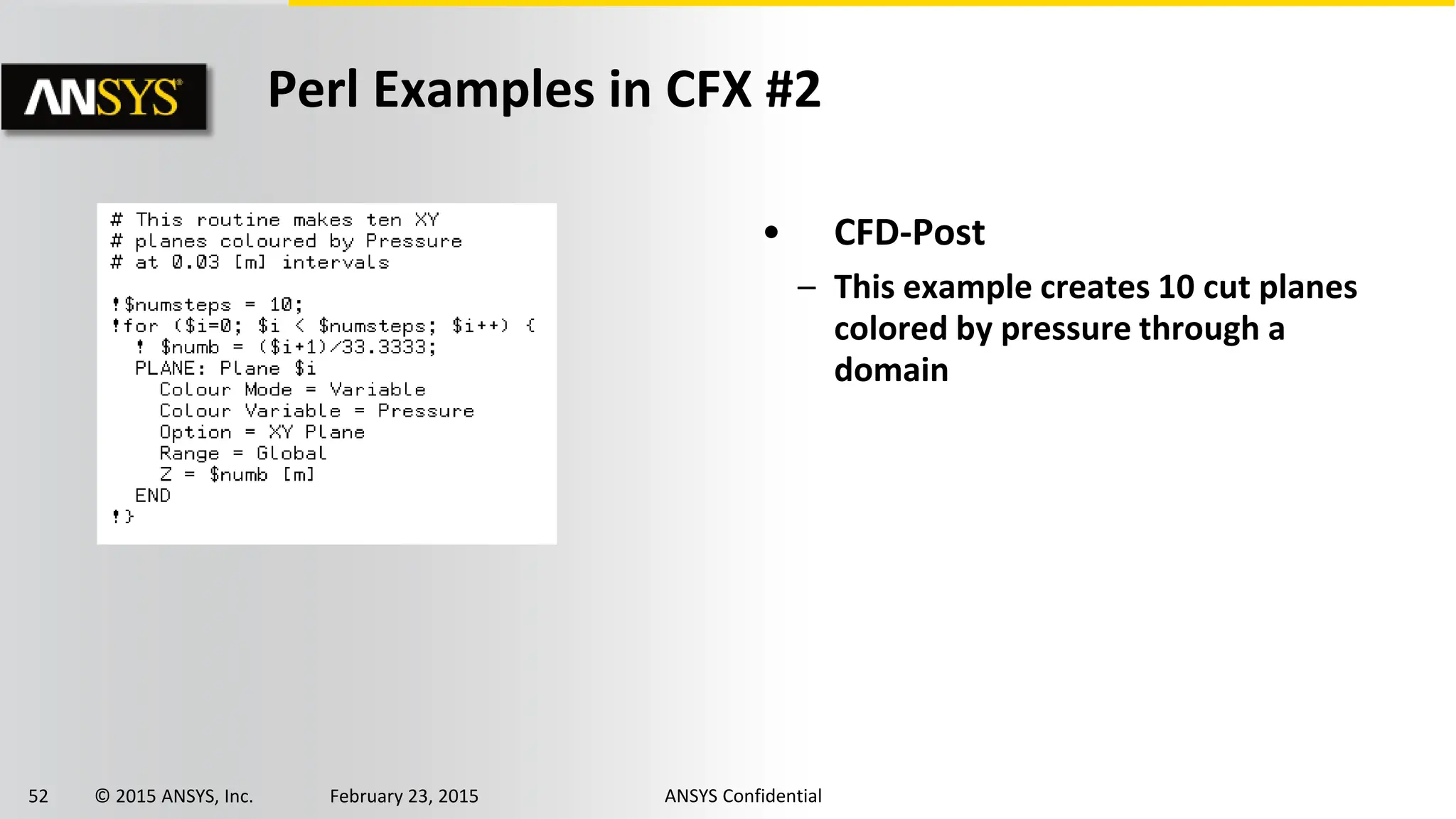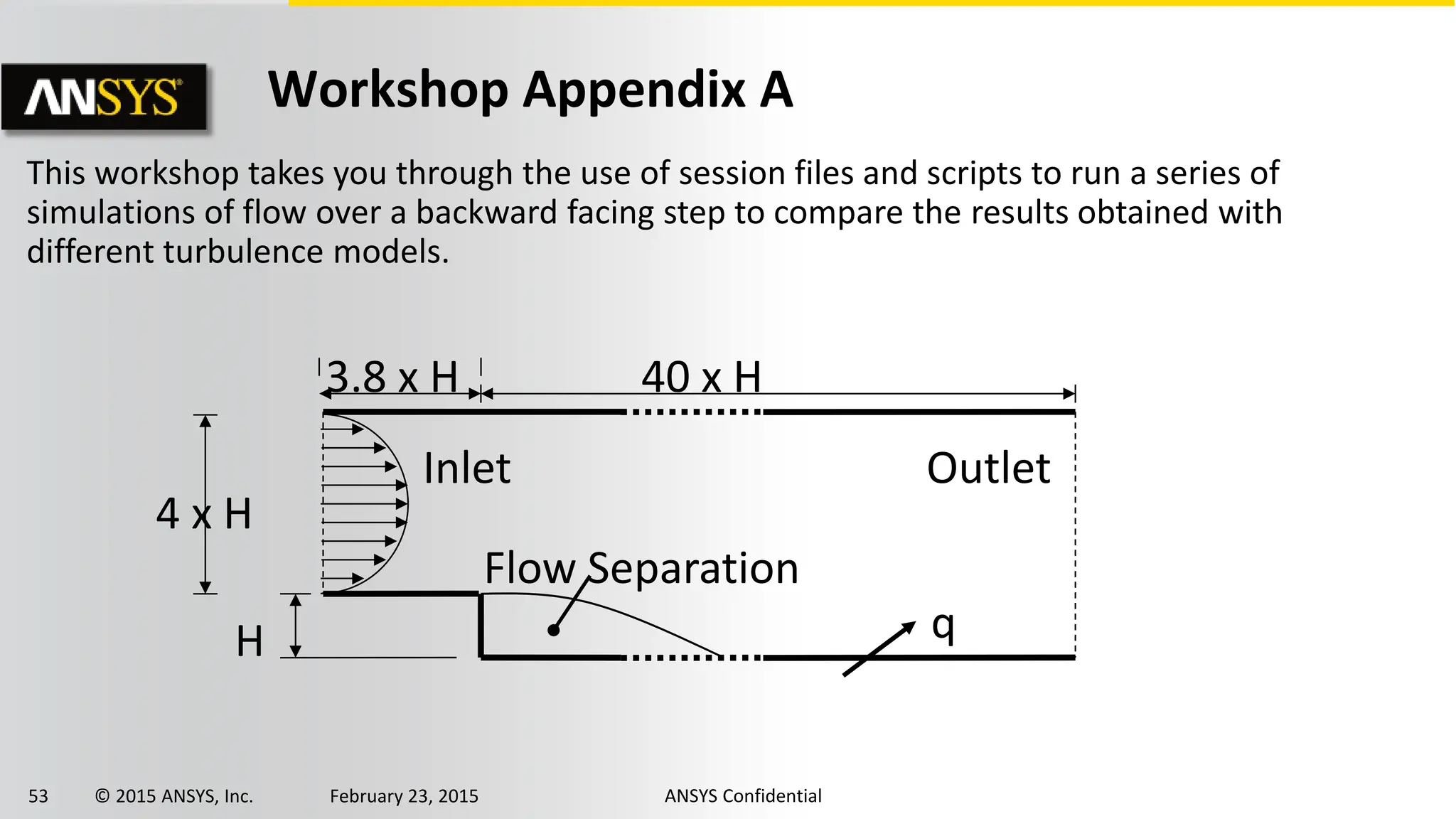The document serves as an introduction to scripting and automation using ANSYS CFX, detailing the user environment, session and state files, and the Perl scripting language. It explains the use of Perl for various programming tasks, highlighting its advantages, syntax, variable types, control structures, and basic input/output operations. Additionally, it covers advanced topics such as regular expressions and subroutines in Perl.
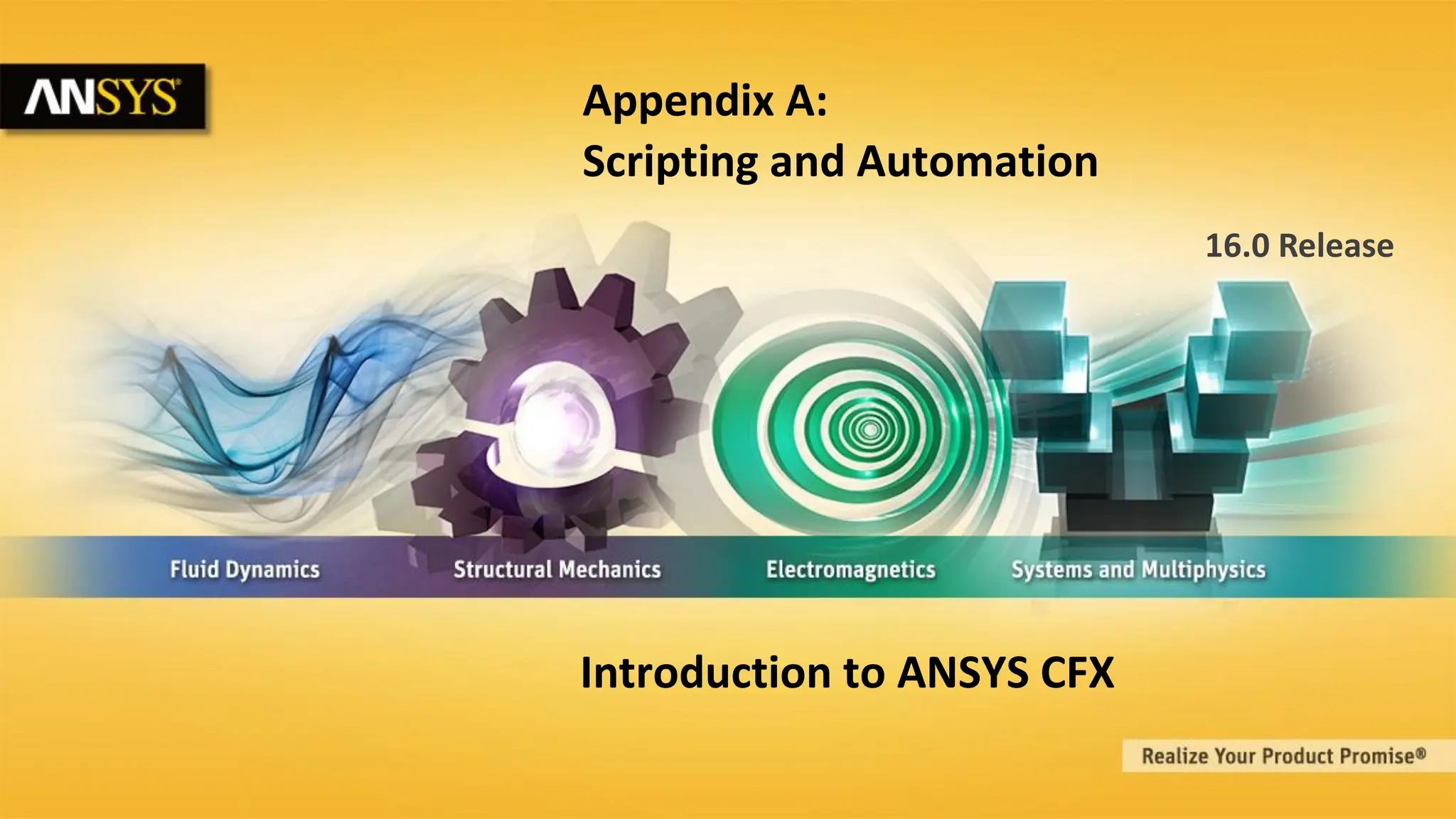
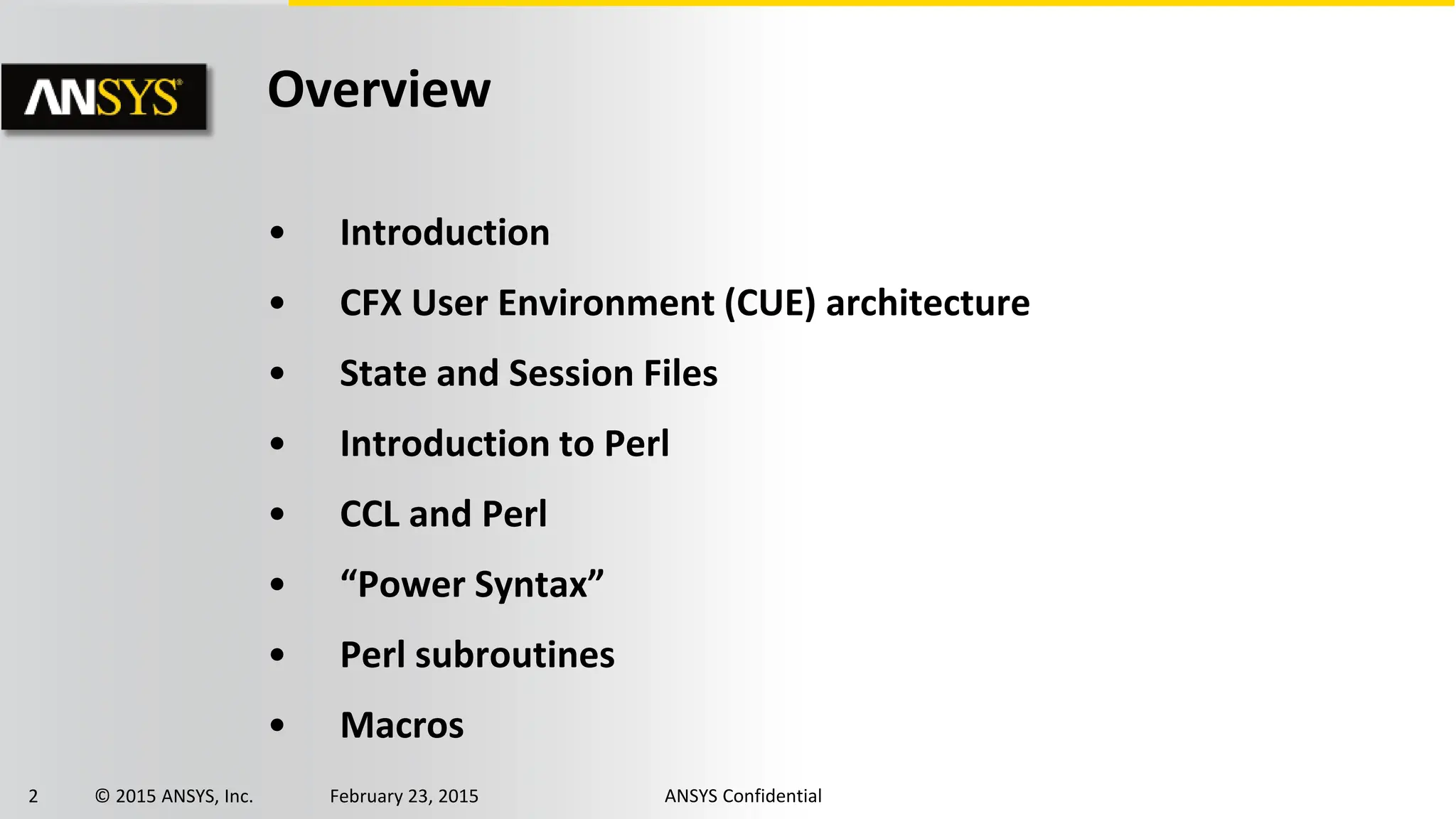
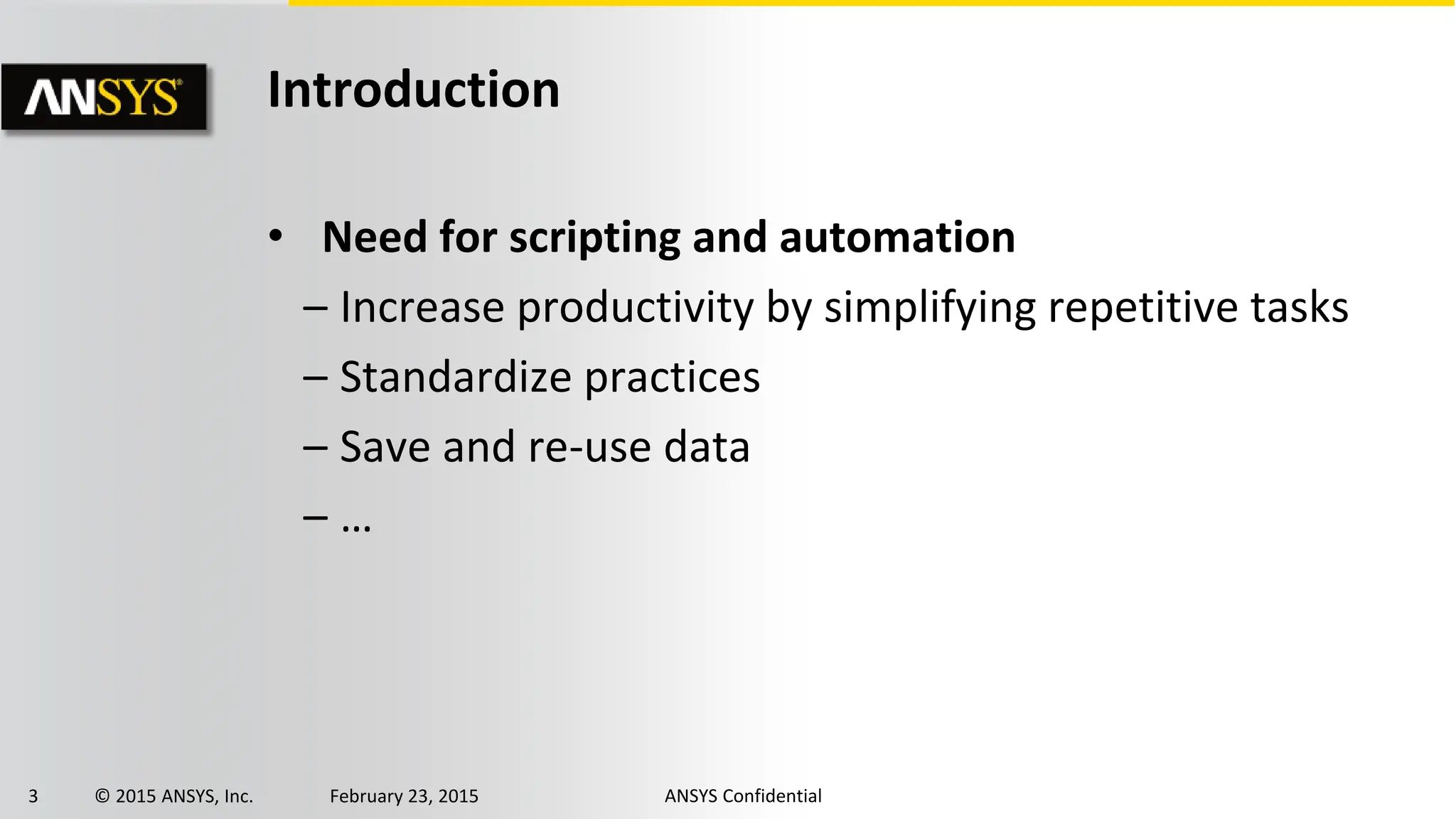
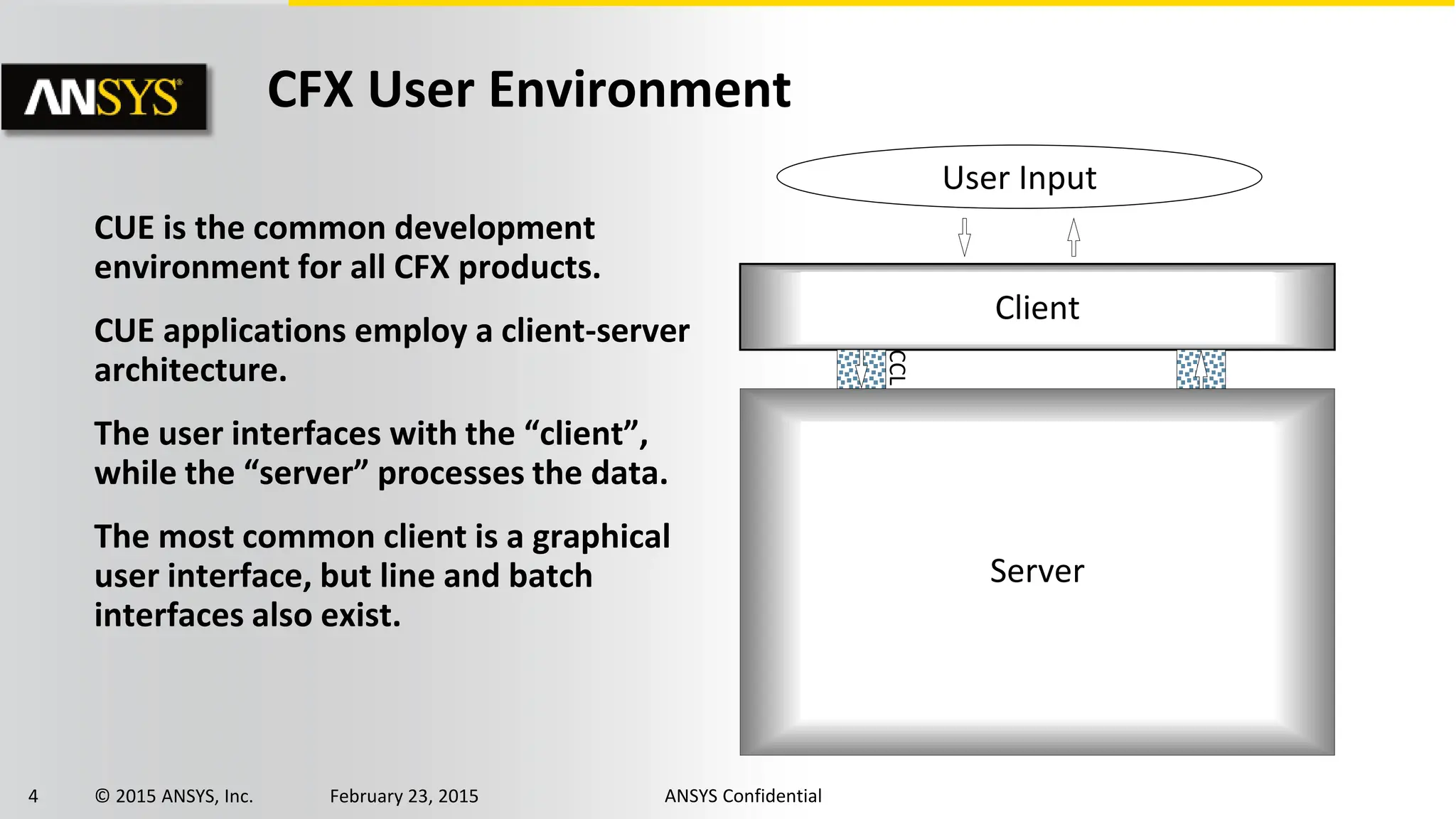
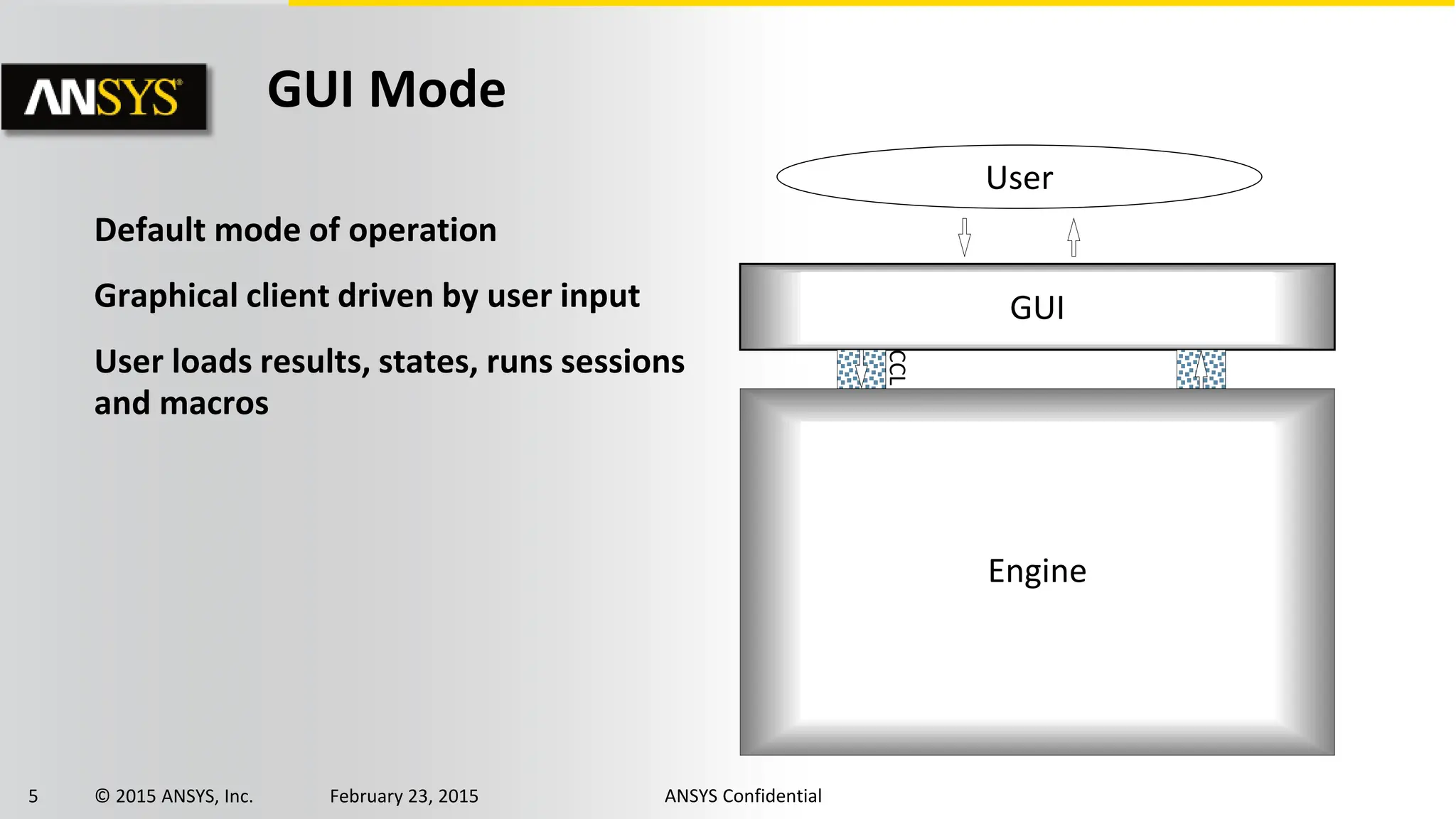
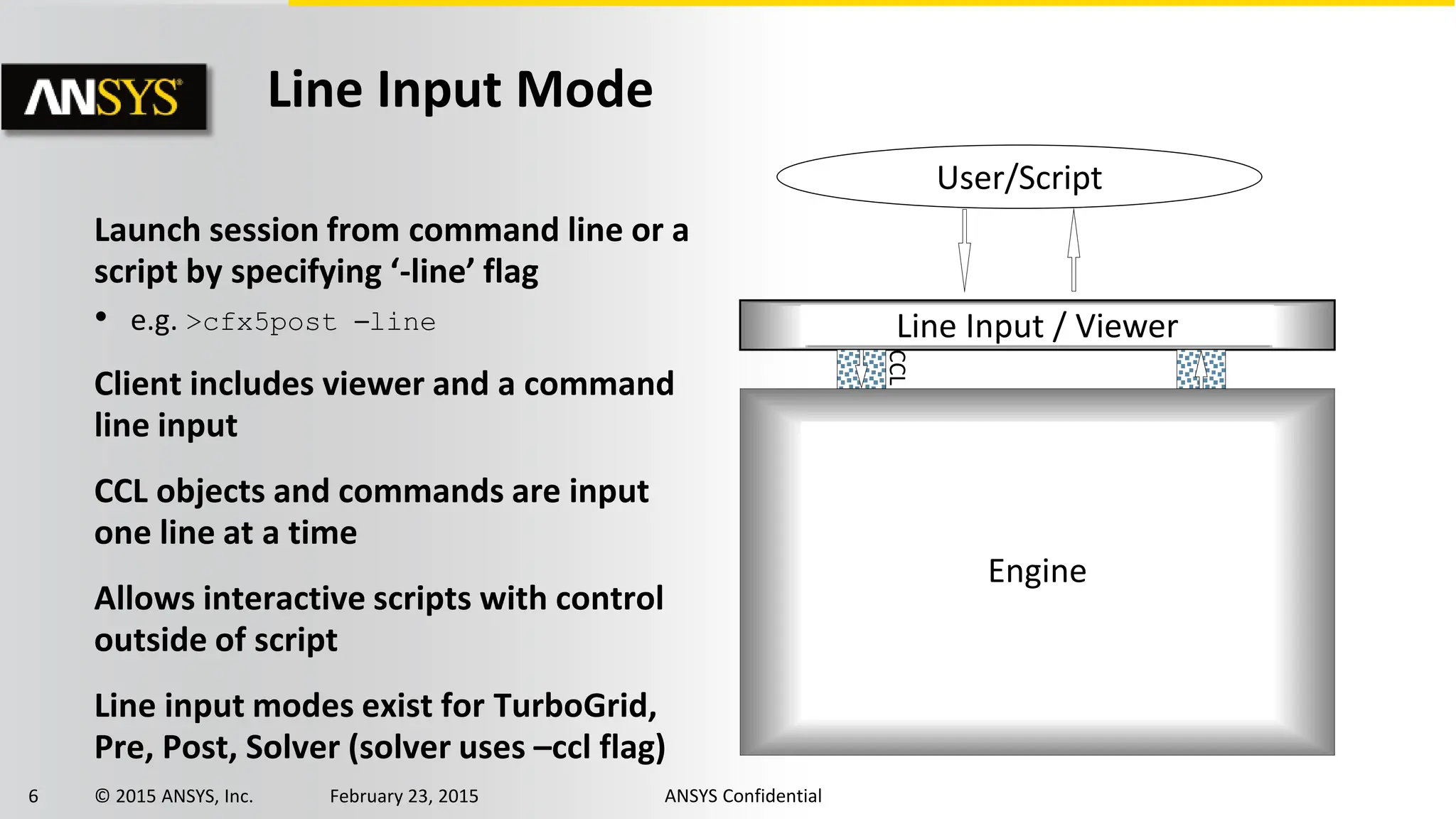
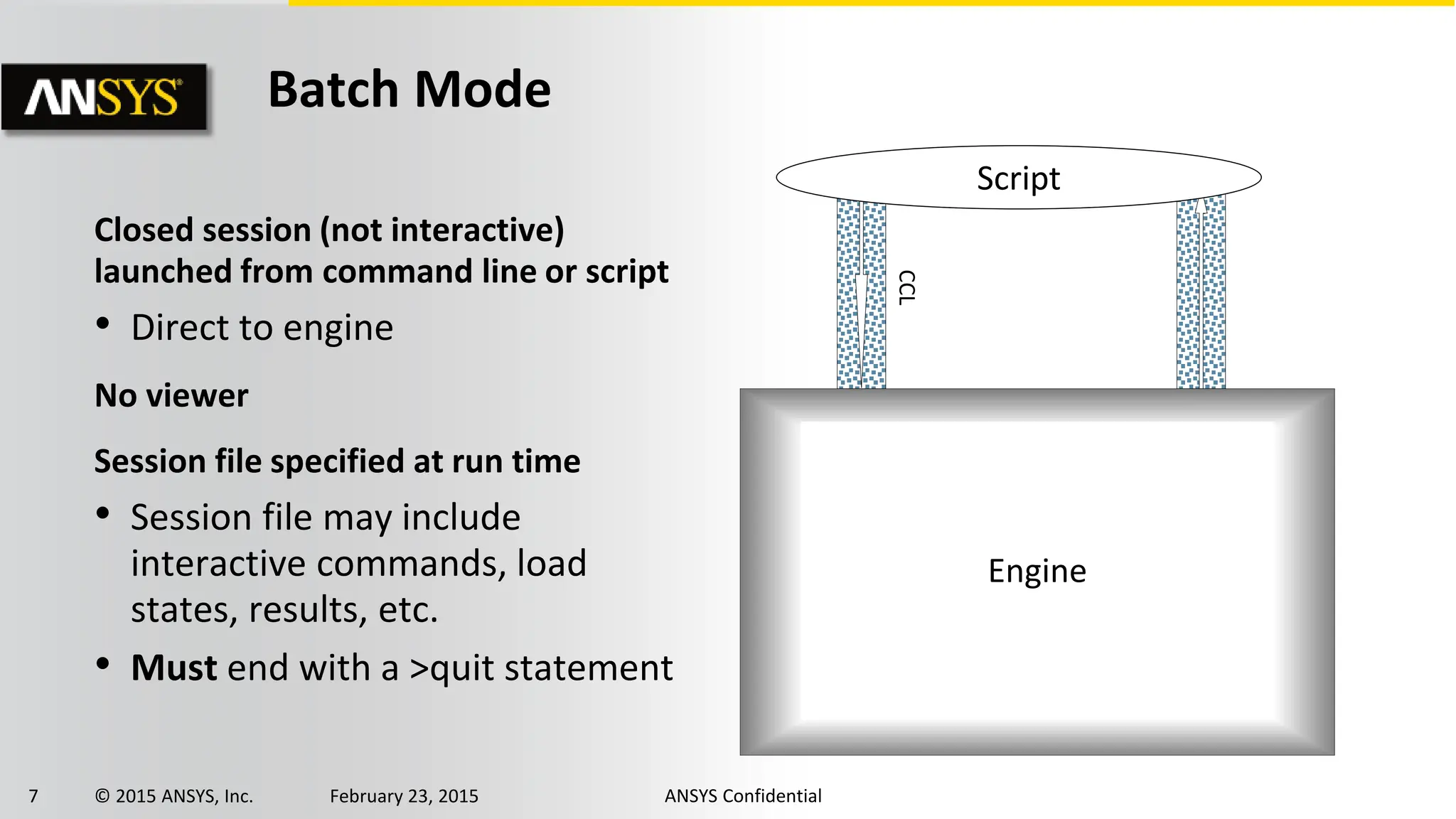
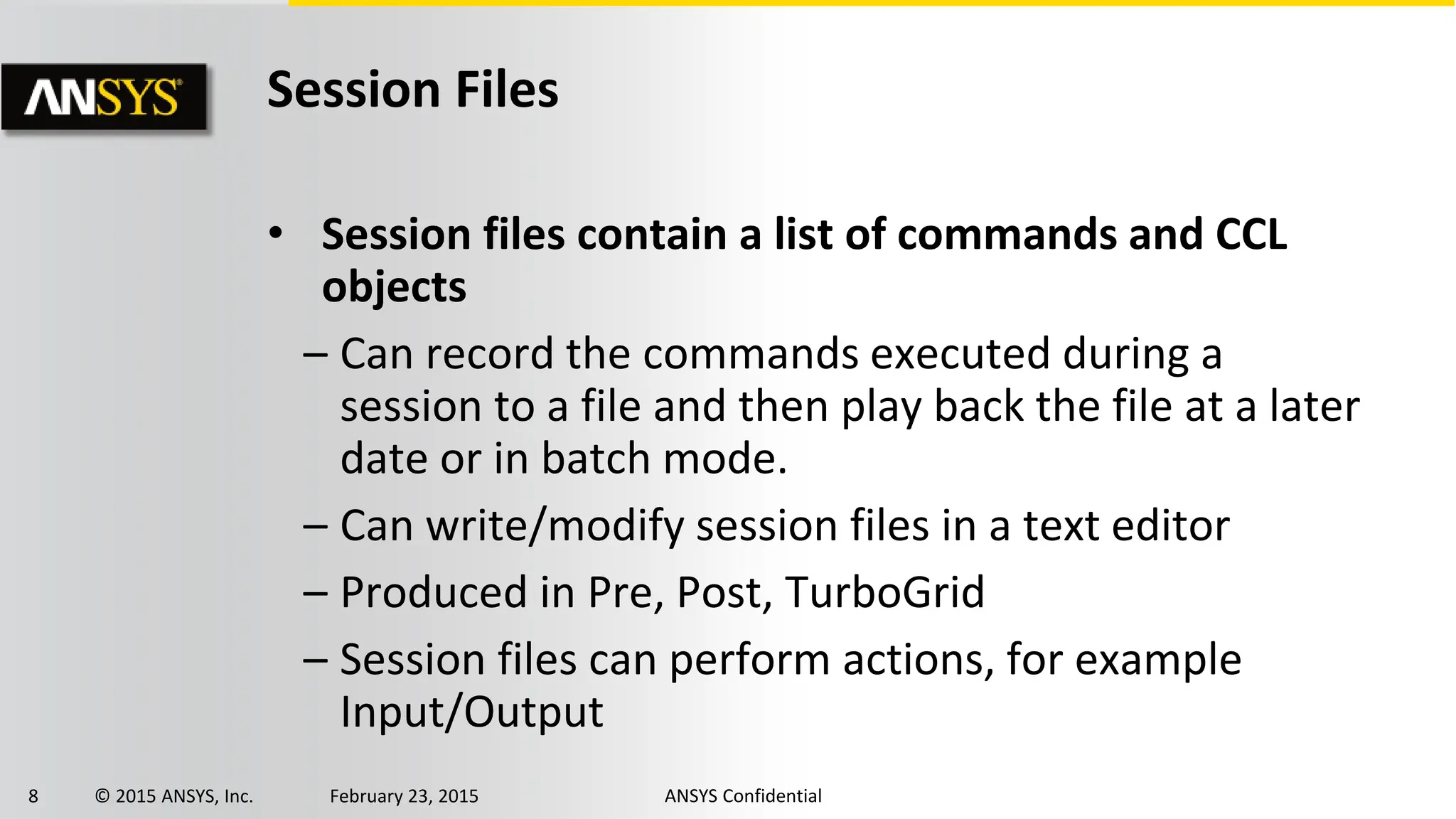
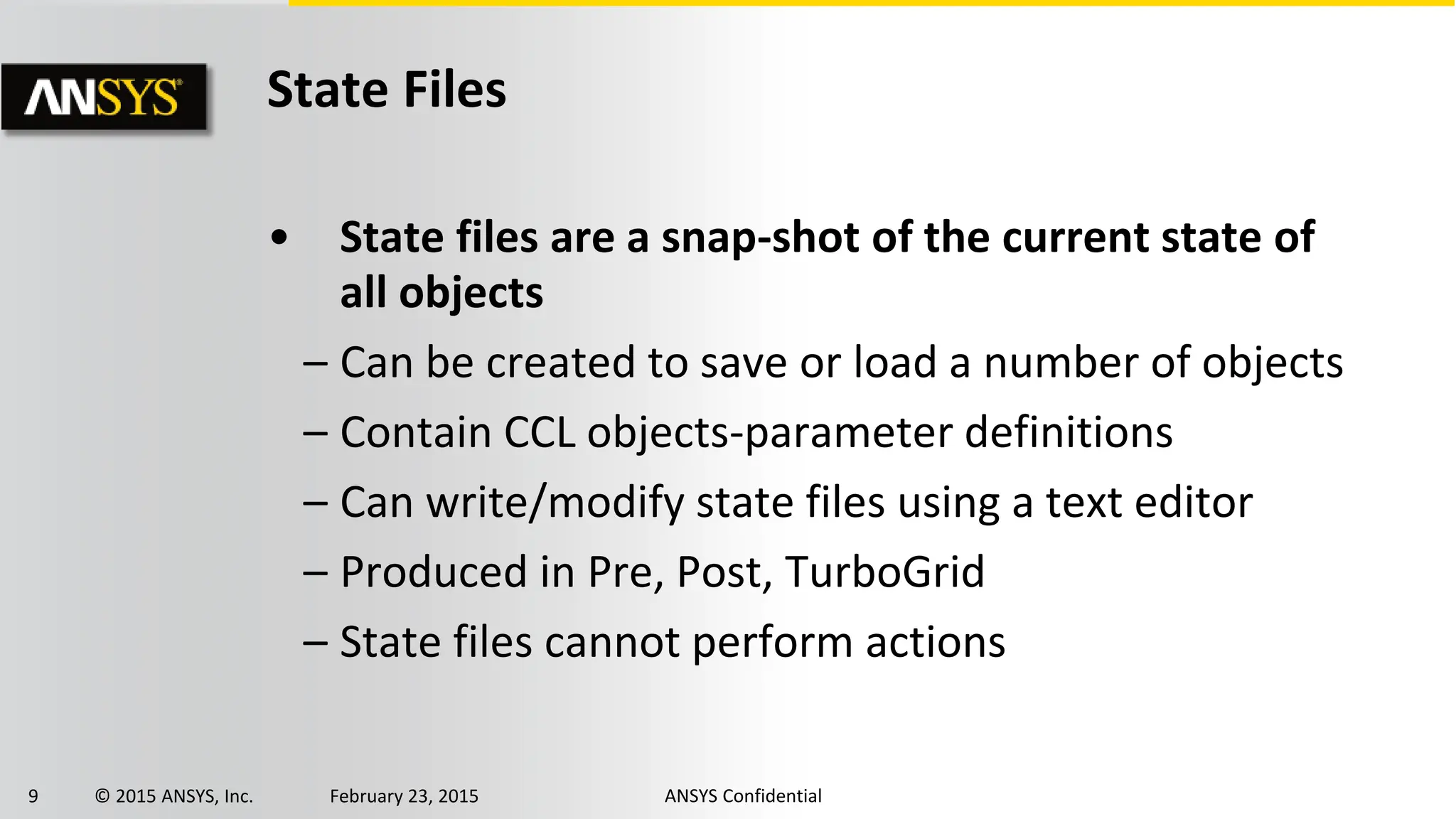
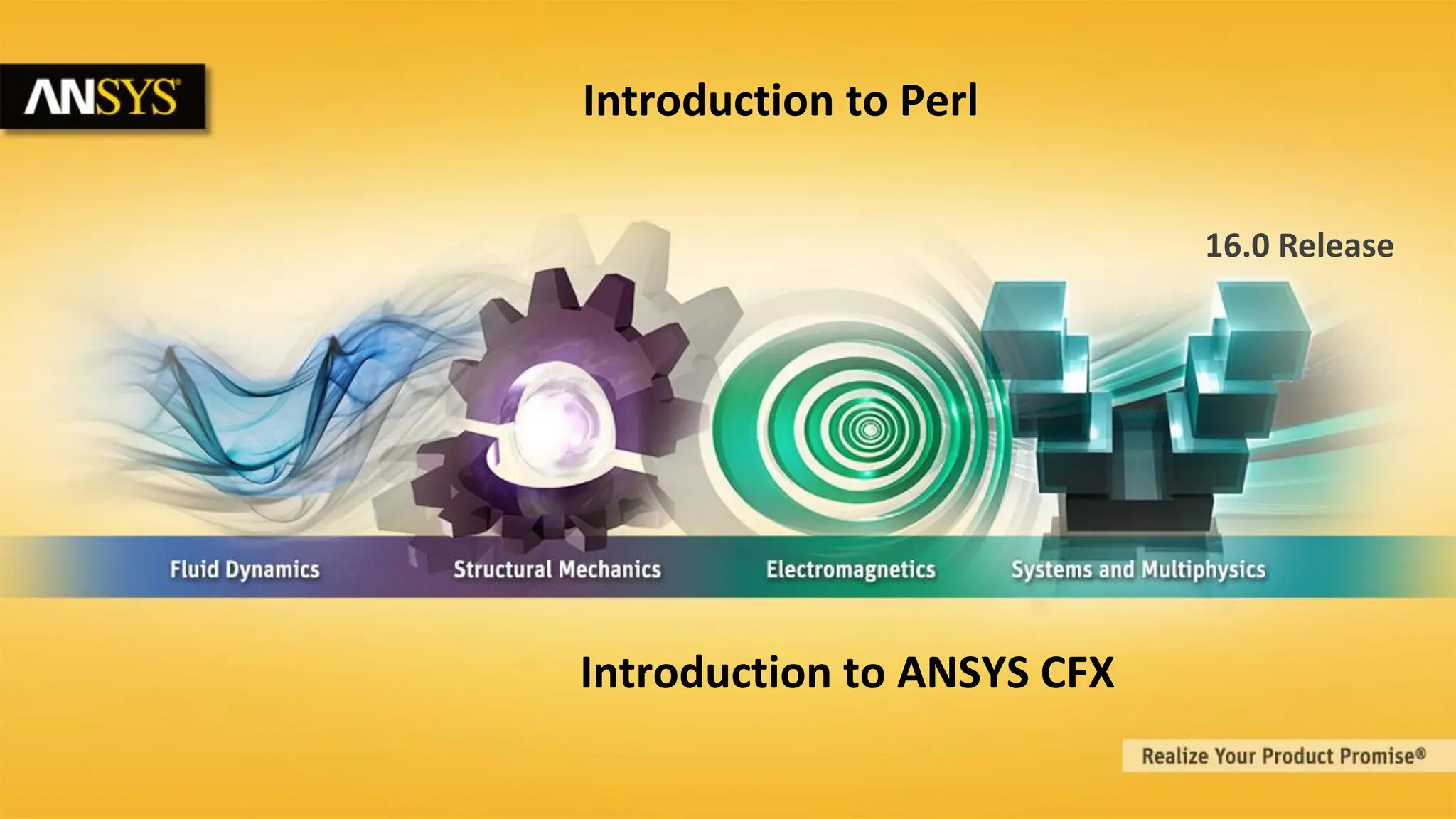
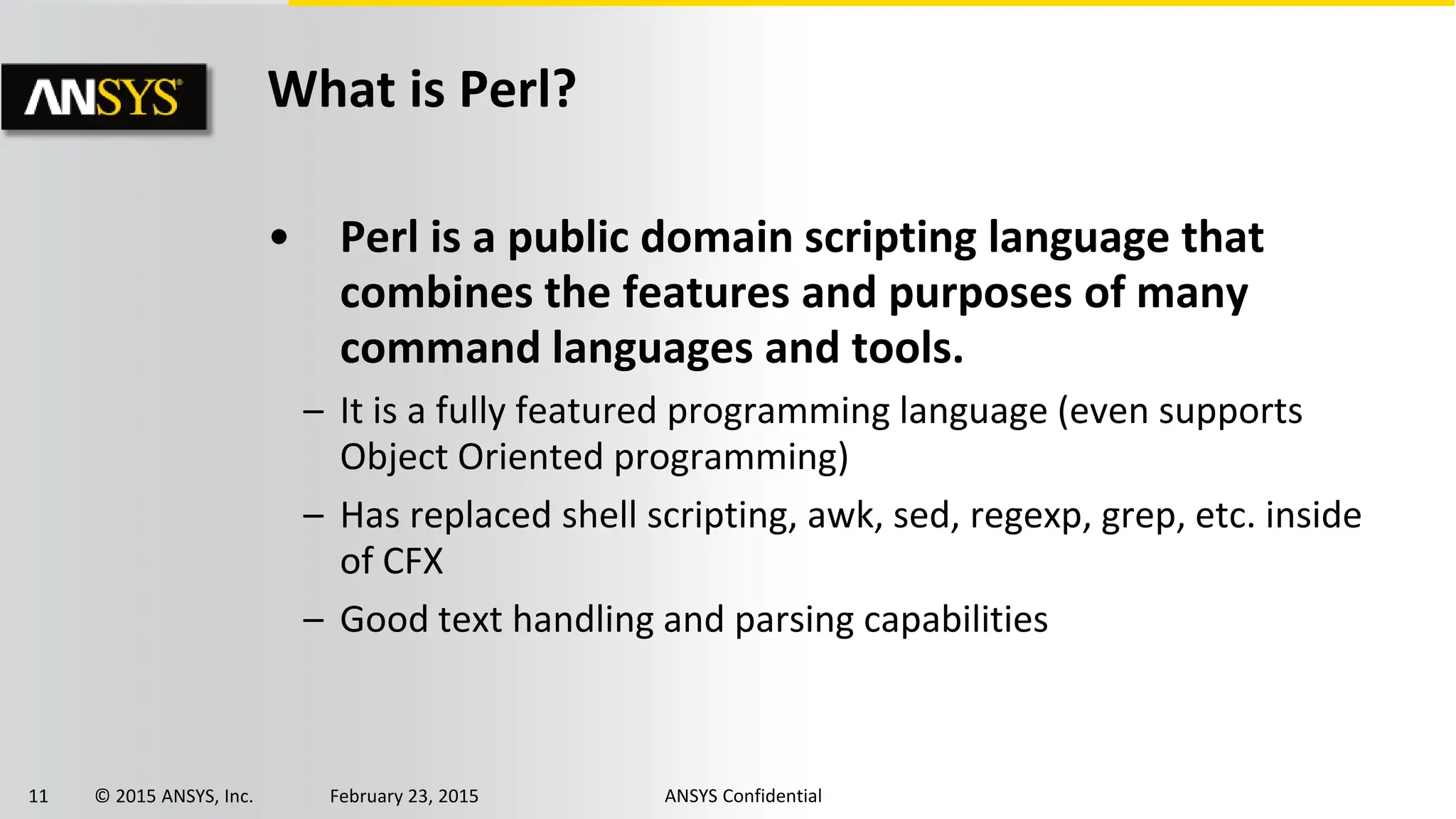
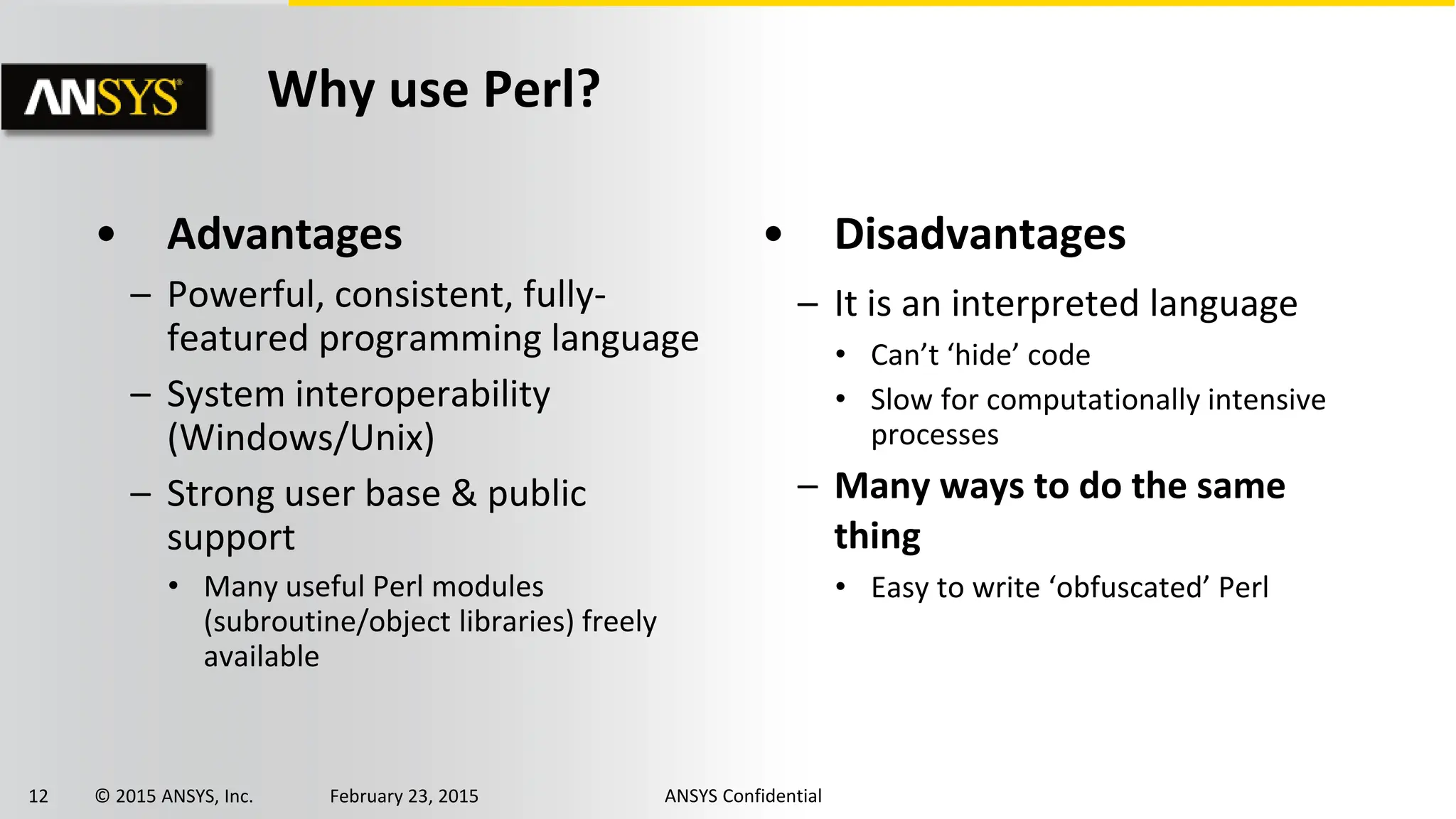
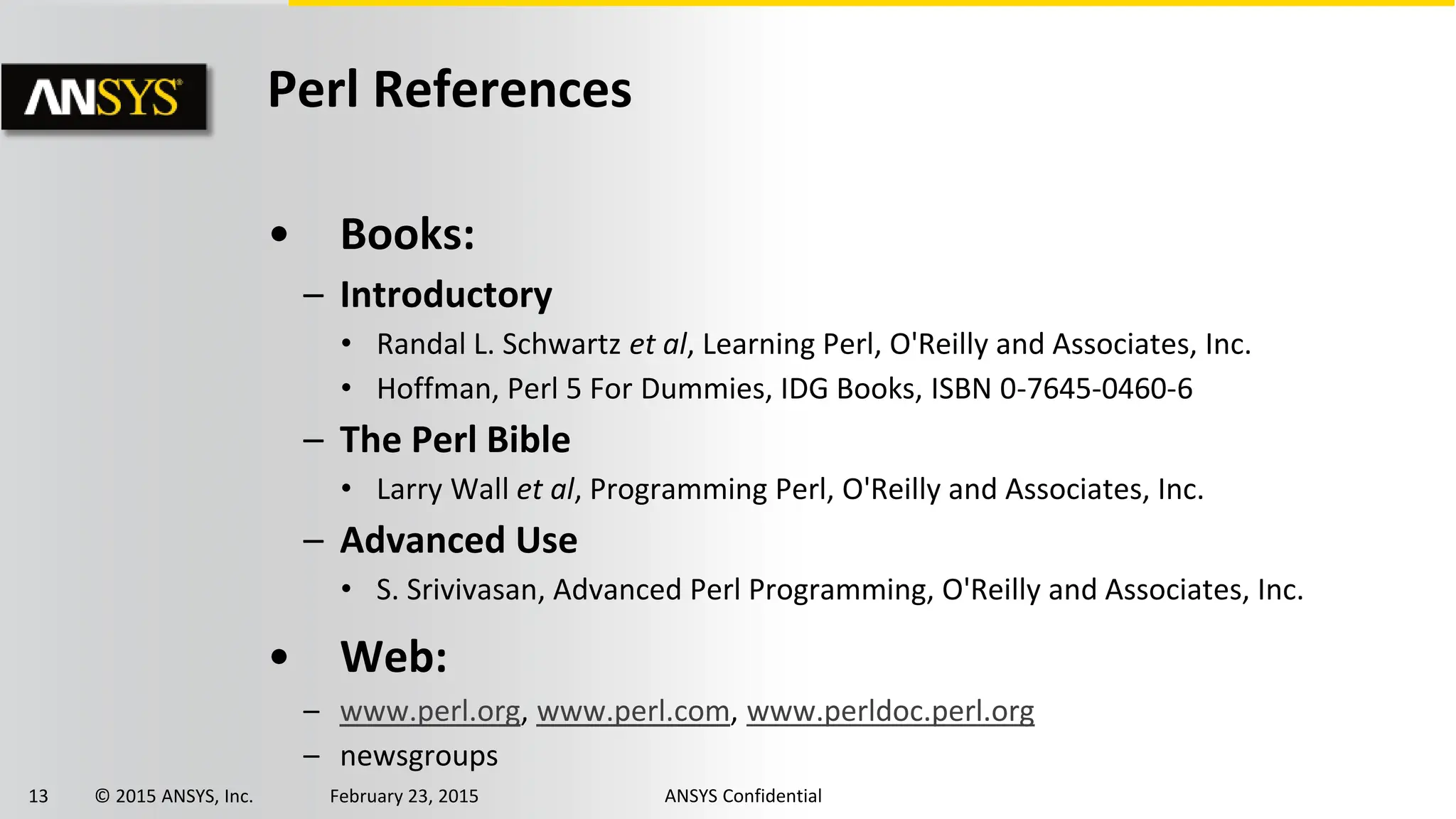
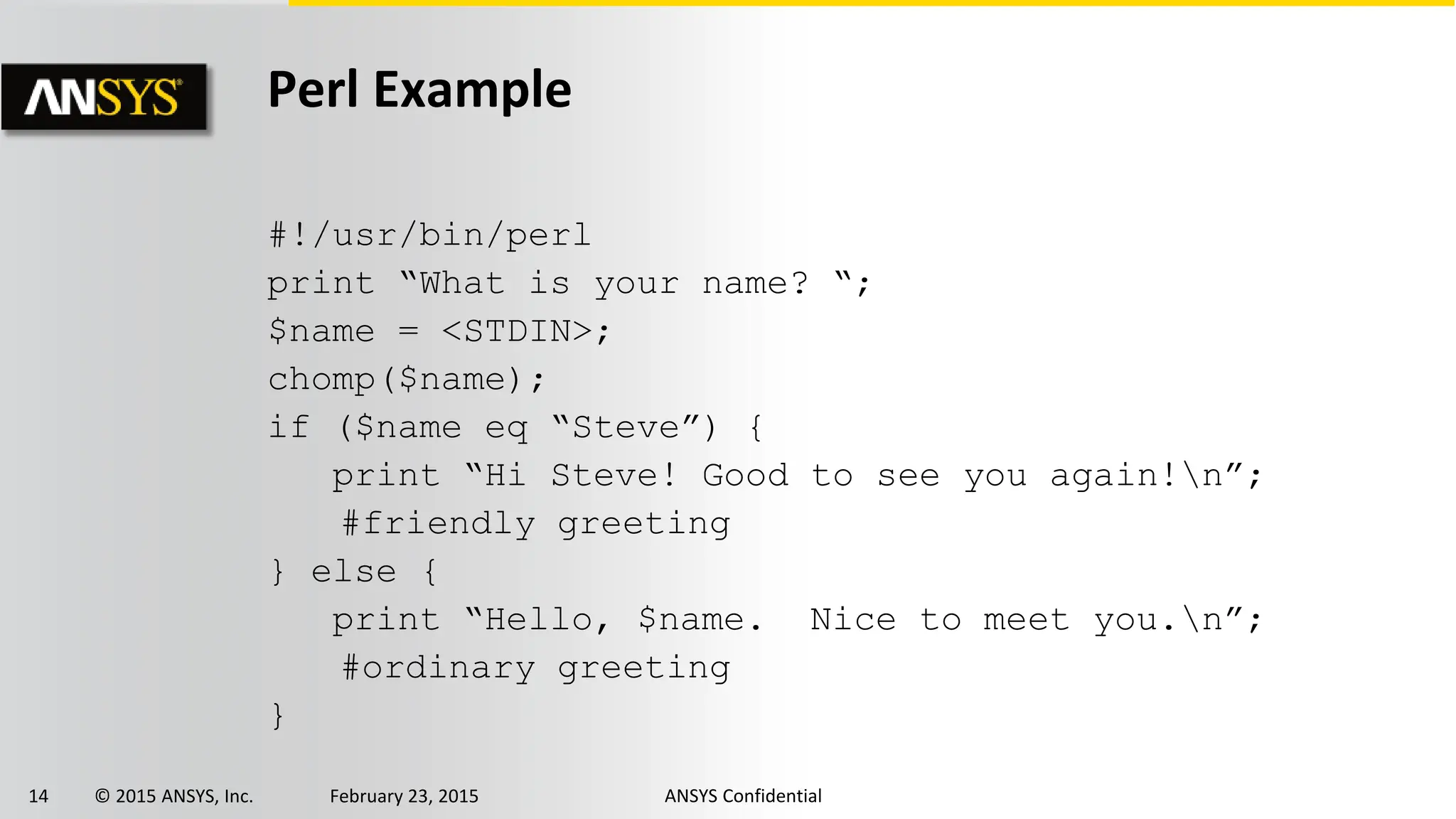
![15 © 2015 ANSYS, Inc. February 23, 2015 ANSYS Confidential
Syntax Basics
• Perl statements are terminated by a semicolon (;)
• Whitespace and indentation do not matter
– Except for making the code readable...
• Everything is case sensitive
• Comments are preceded by a pound sign (#)
– There are no multi-line comments (e.g. /* [..] */ in C++)](https://image.slidesharecdn.com/cfxintro16-240815232057-f3ca76e8/75/CFX_Intro_16-0_App-A_Scripting_perl_cfx-pdf-15-2048.jpg)
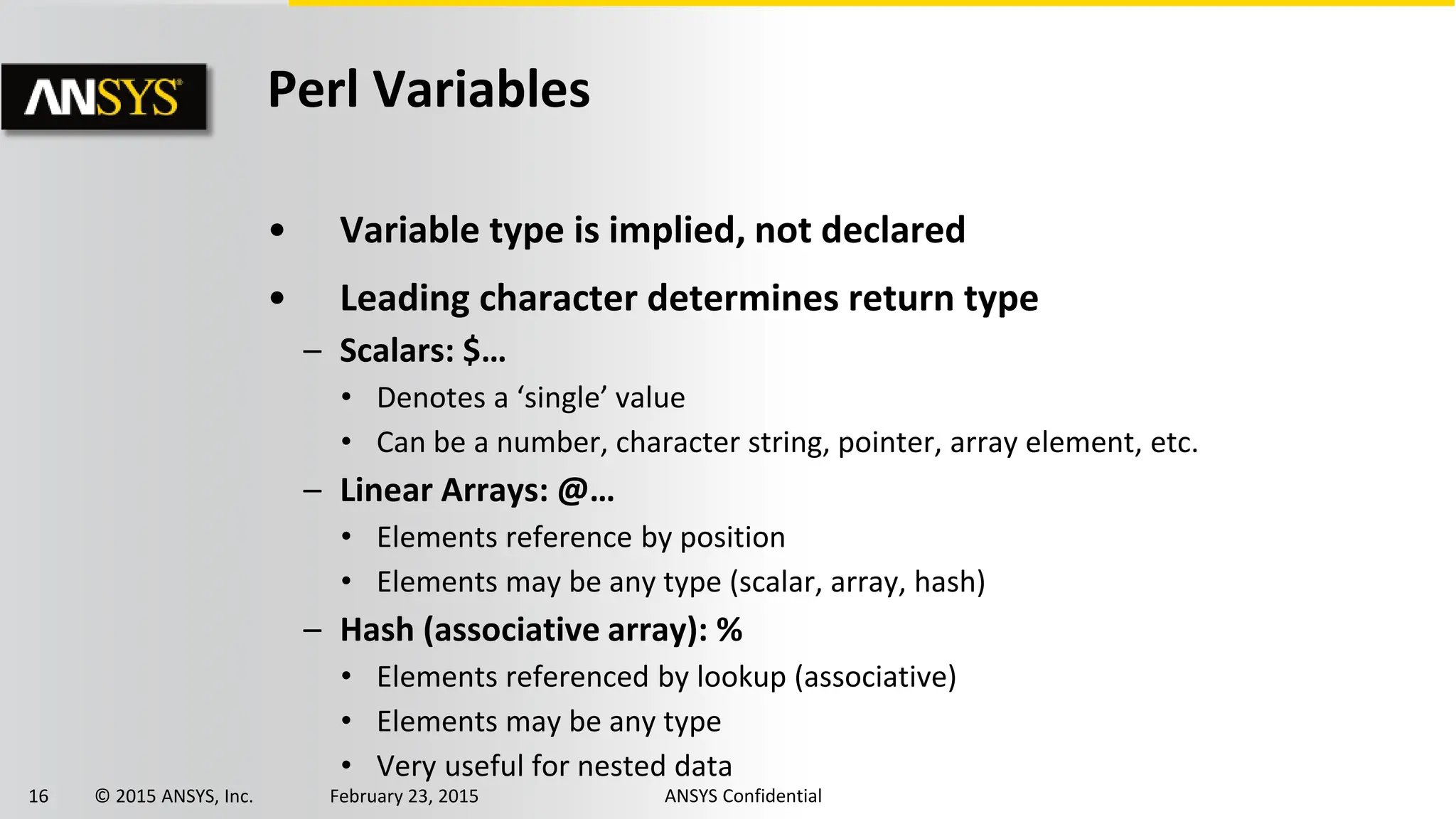
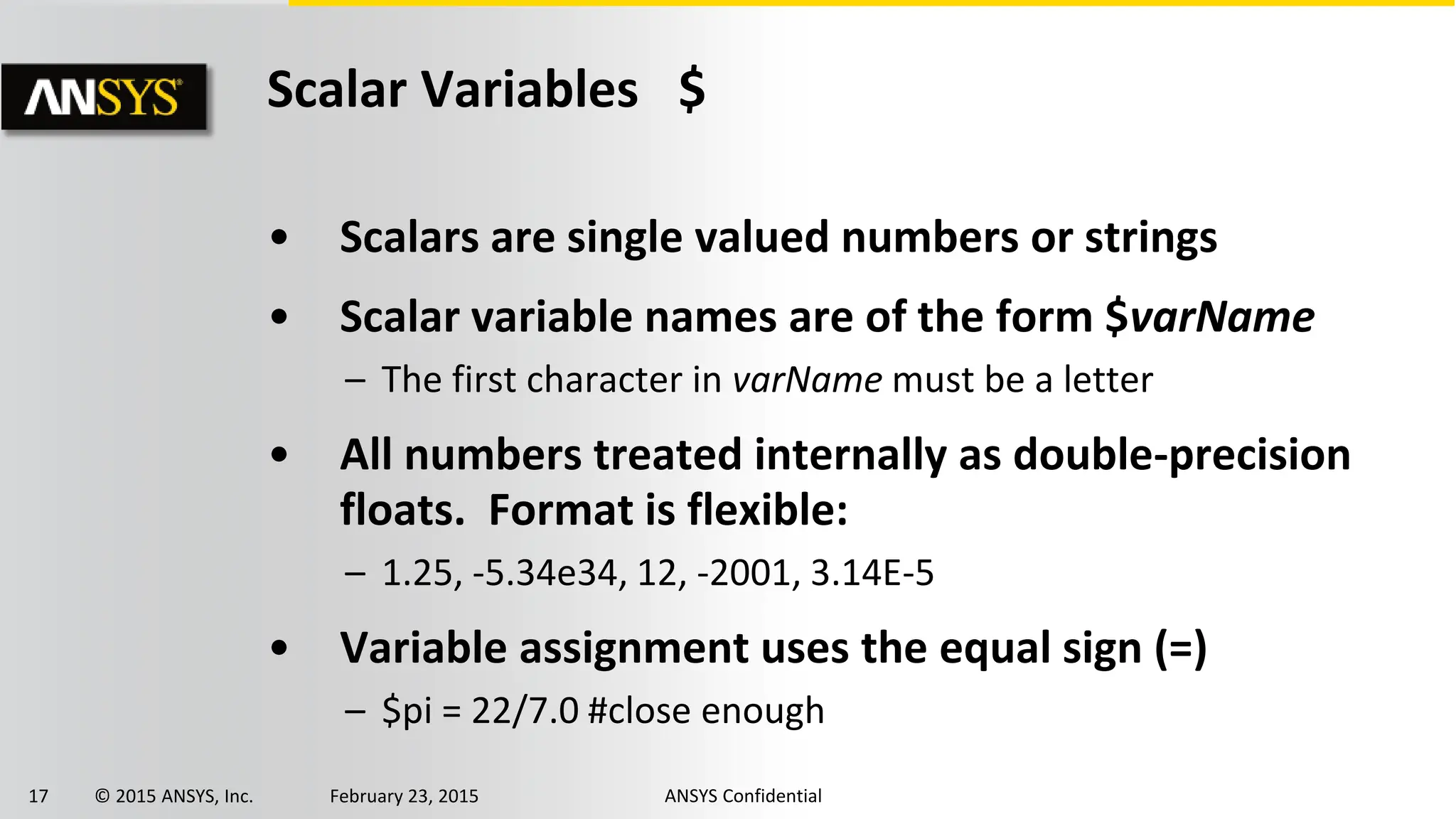
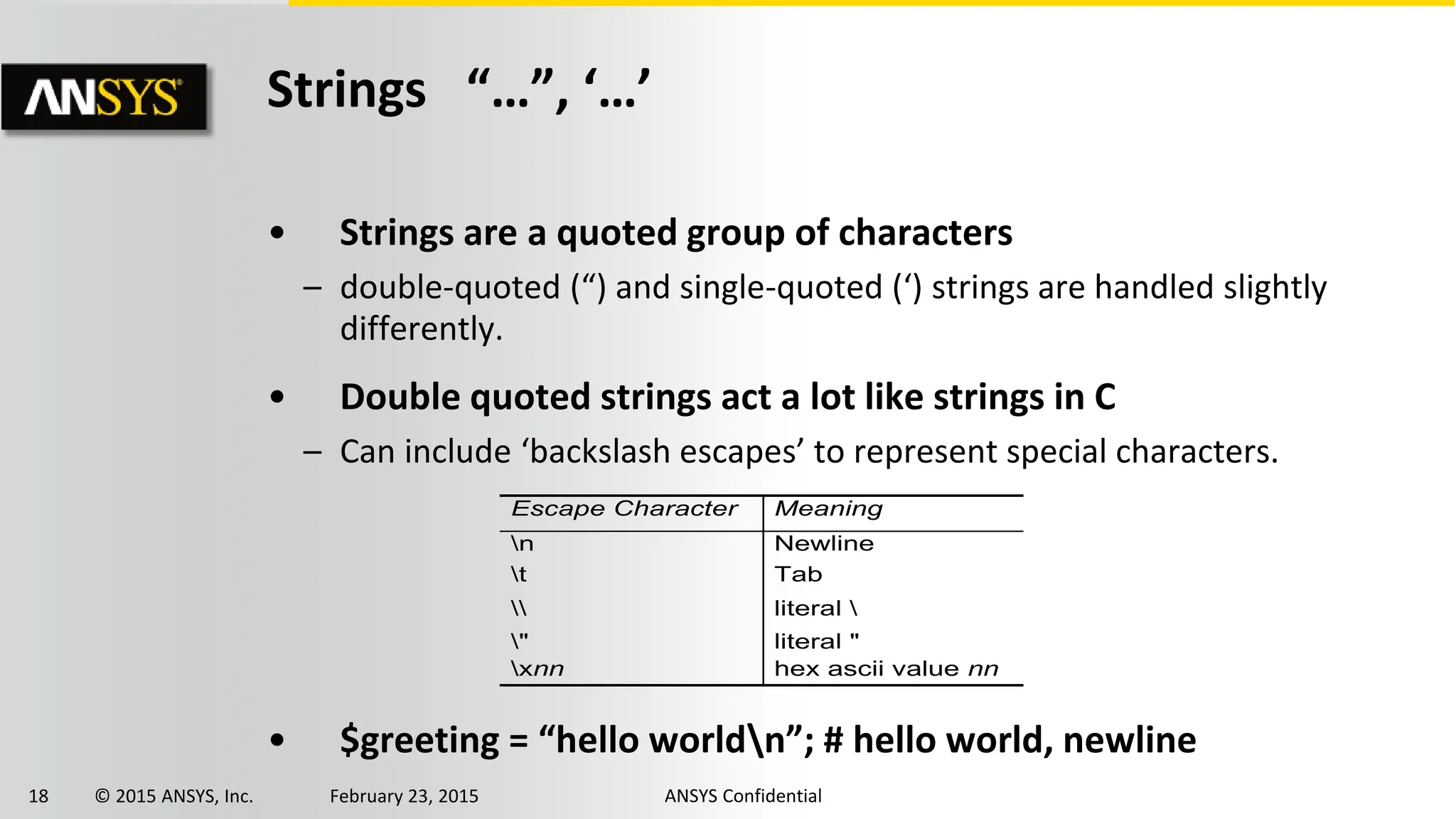
![19 © 2015 ANSYS, Inc. February 23, 2015 ANSYS Confidential
Arrays (lists)
• An array is an ordered list of scalar data
• Arrays can have any number of elements
– Perl deals with all memory management issues
– Arrays are zero indexed
• The @ sign denotes an array variable
– @evens=(2,4,6,8);
– @numbers = (1..5); # (1,2,3,4,5)
• Access a array elements using $listName[indices];
– $four = $evens[1];
– ($four,$five) = $numbers[3,4];](https://image.slidesharecdn.com/cfxintro16-240815232057-f3ca76e8/75/CFX_Intro_16-0_App-A_Scripting_perl_cfx-pdf-19-2048.jpg)
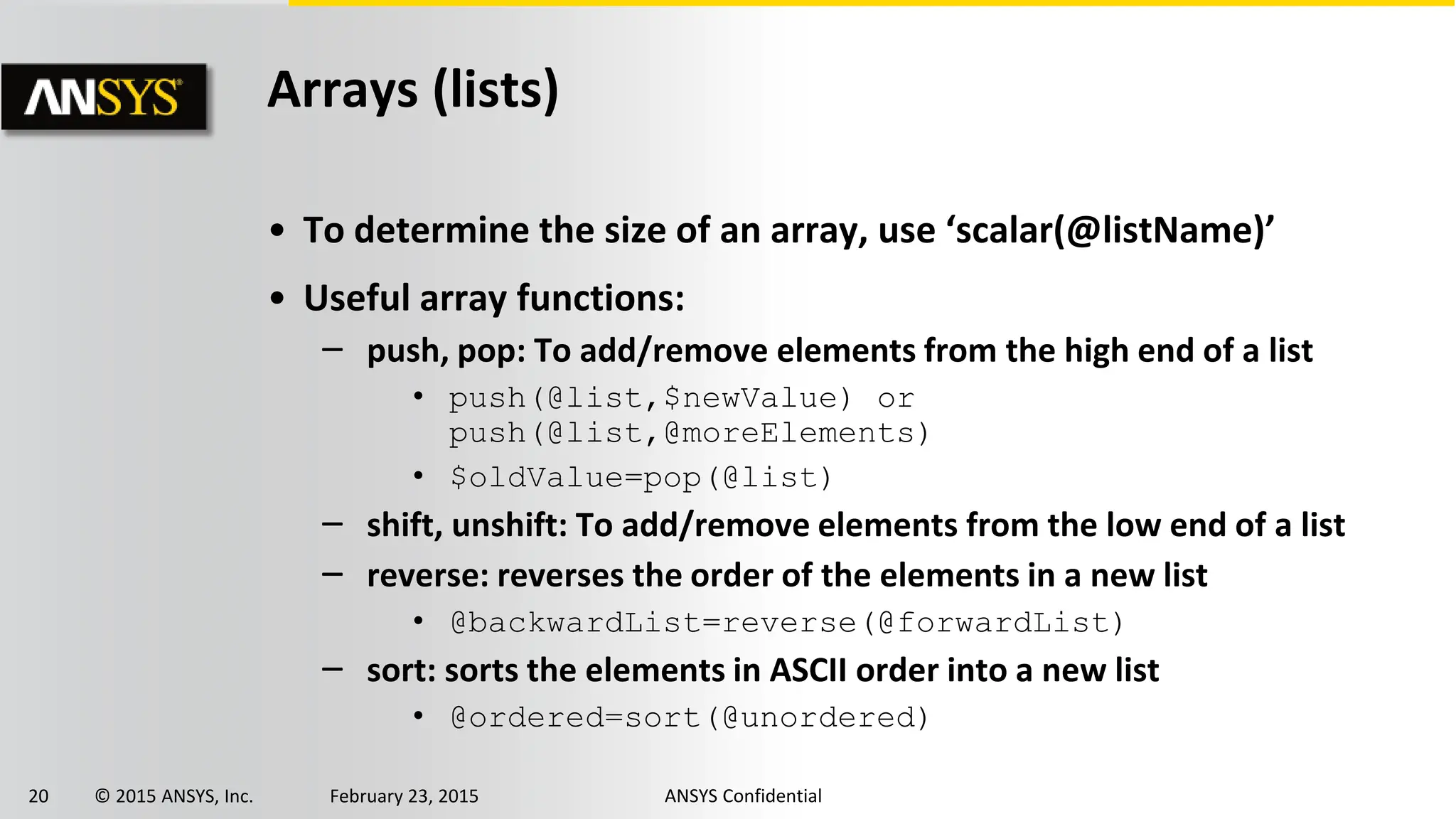
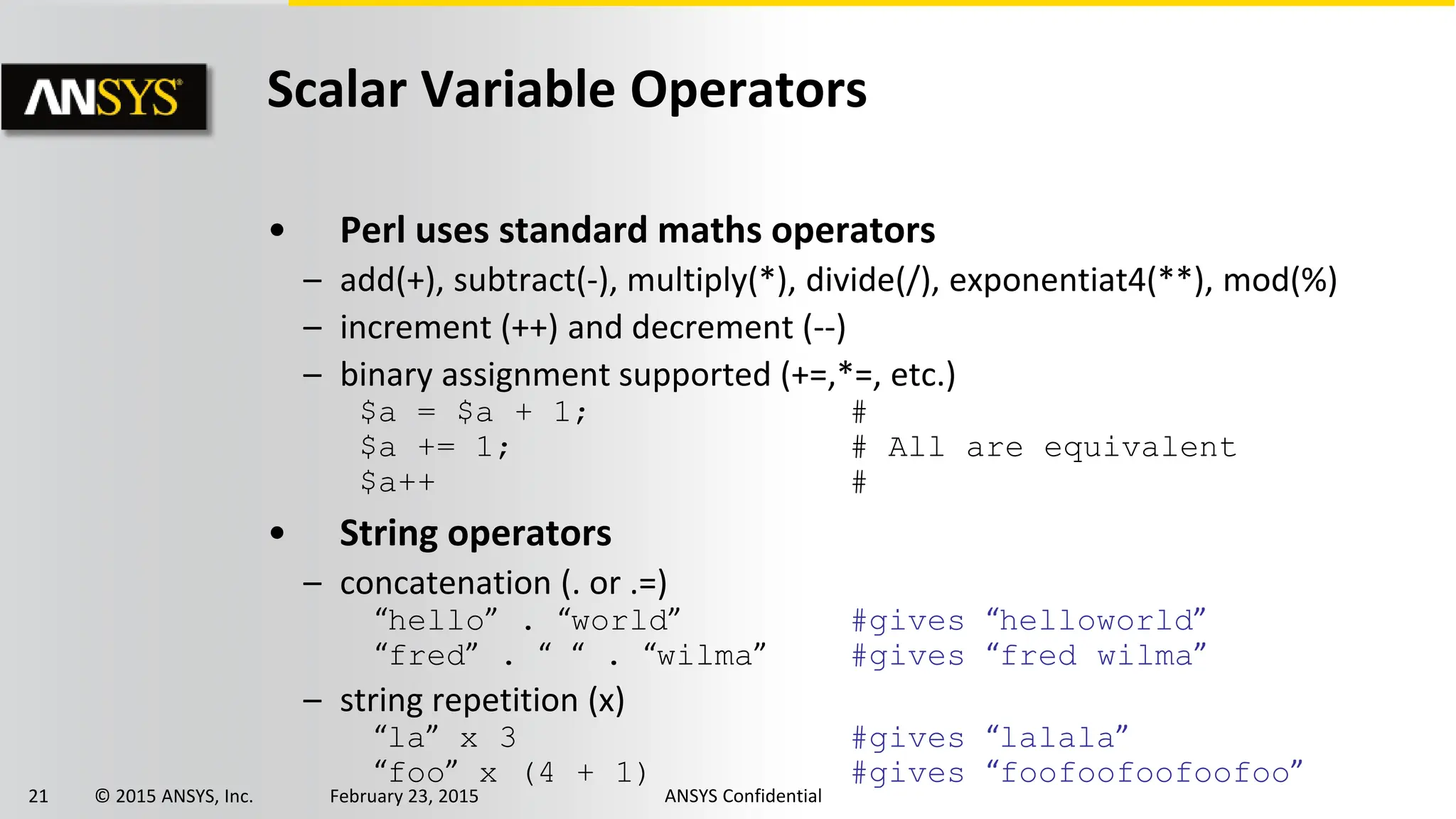
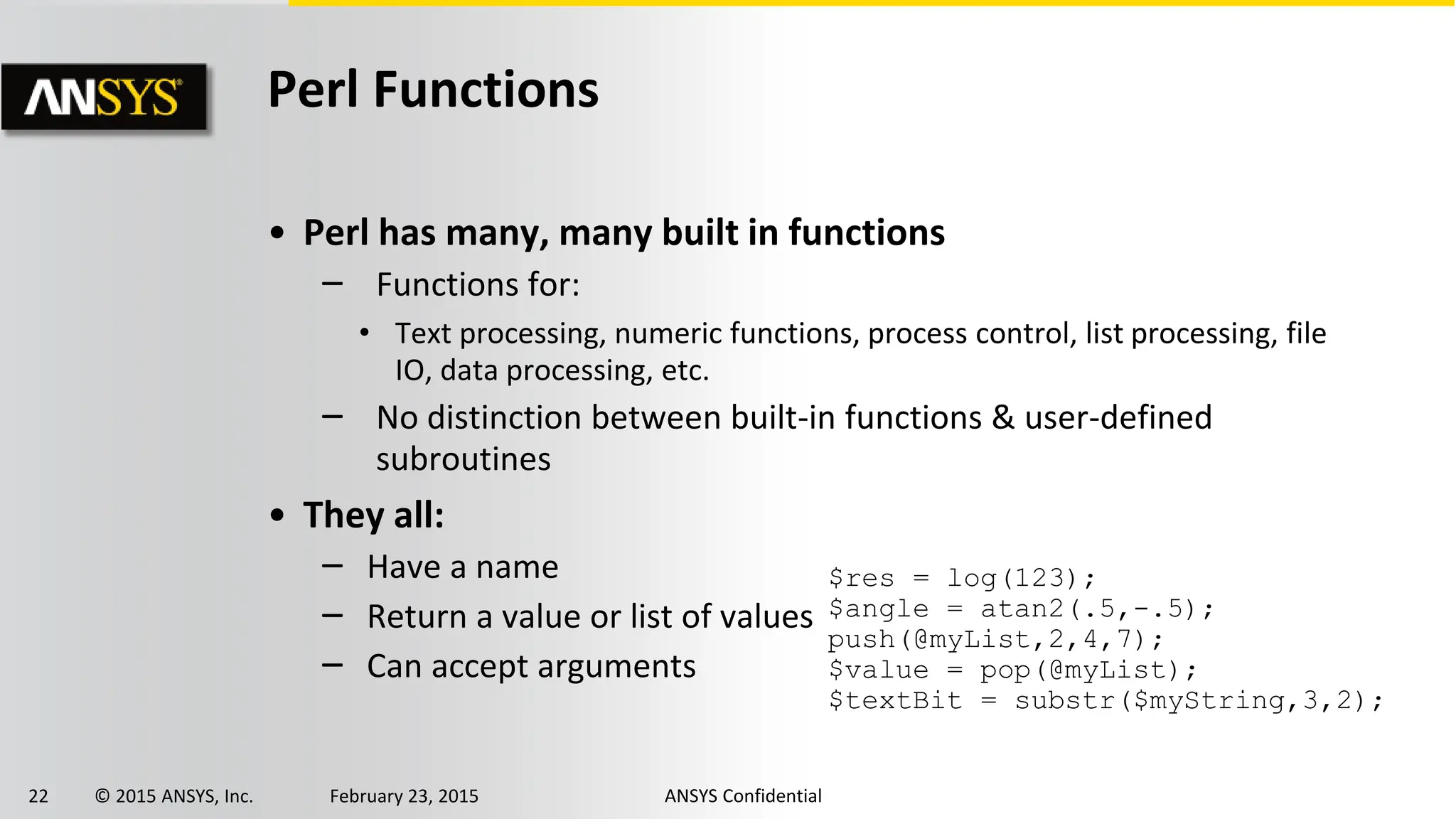
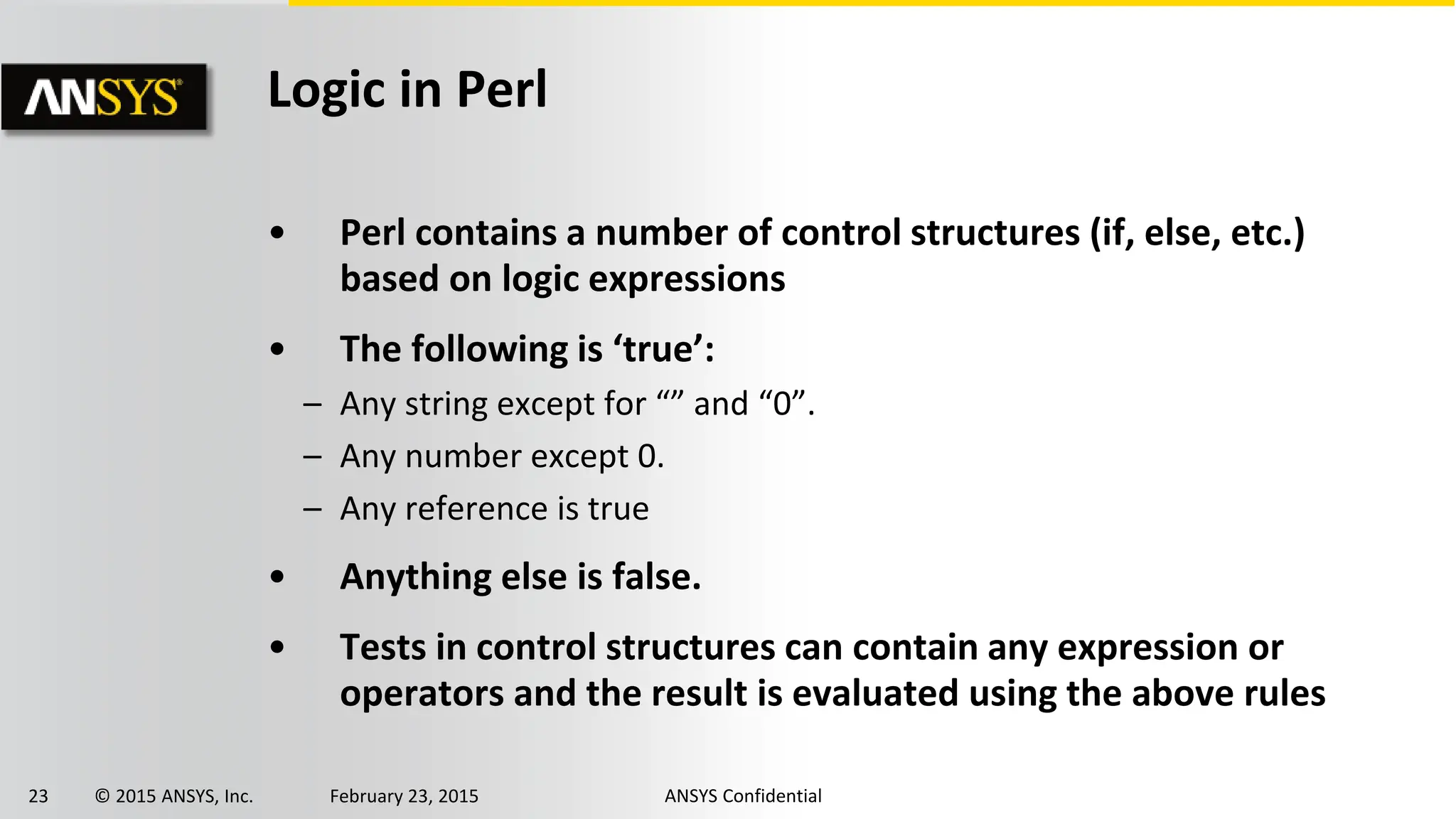
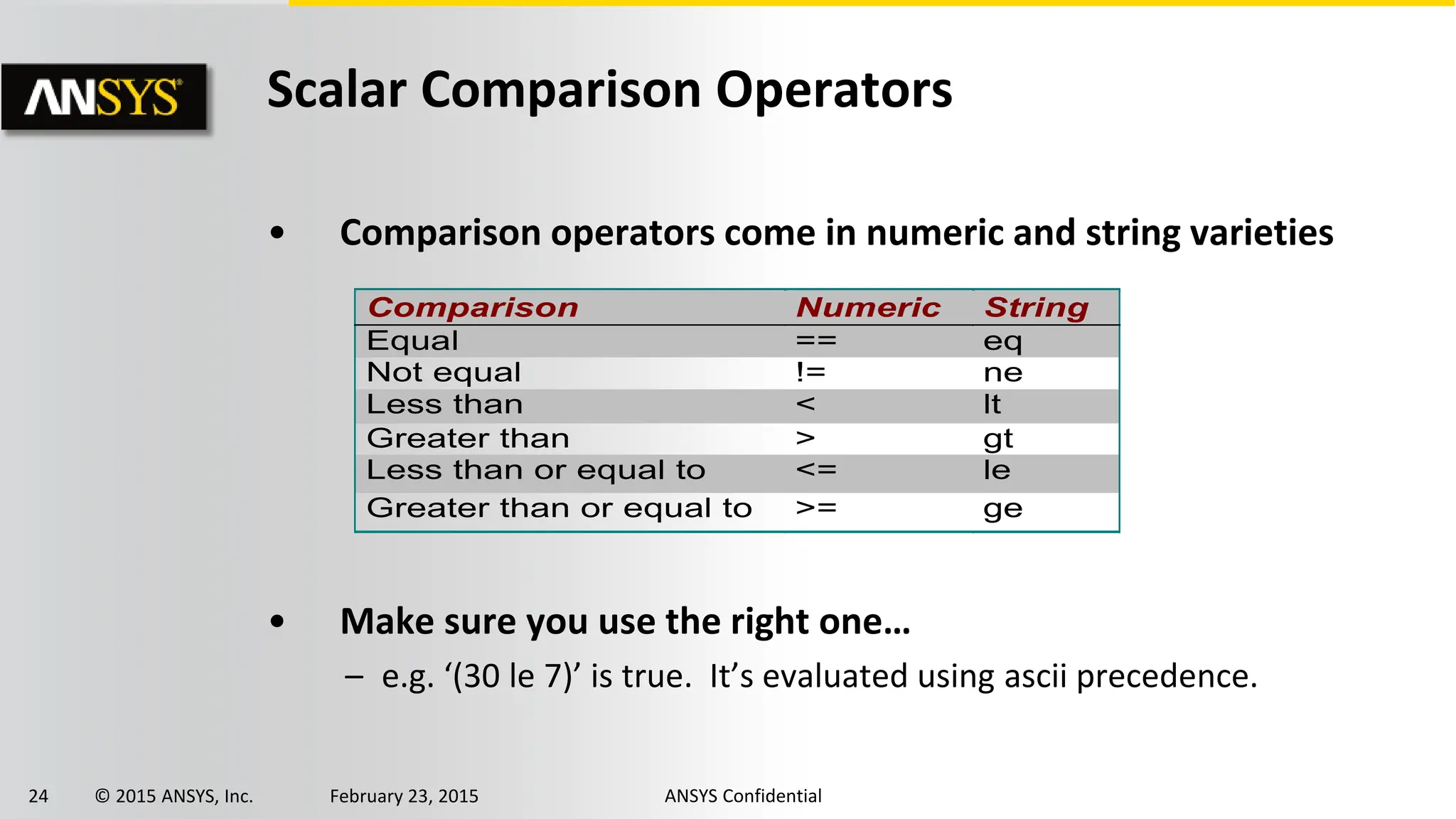
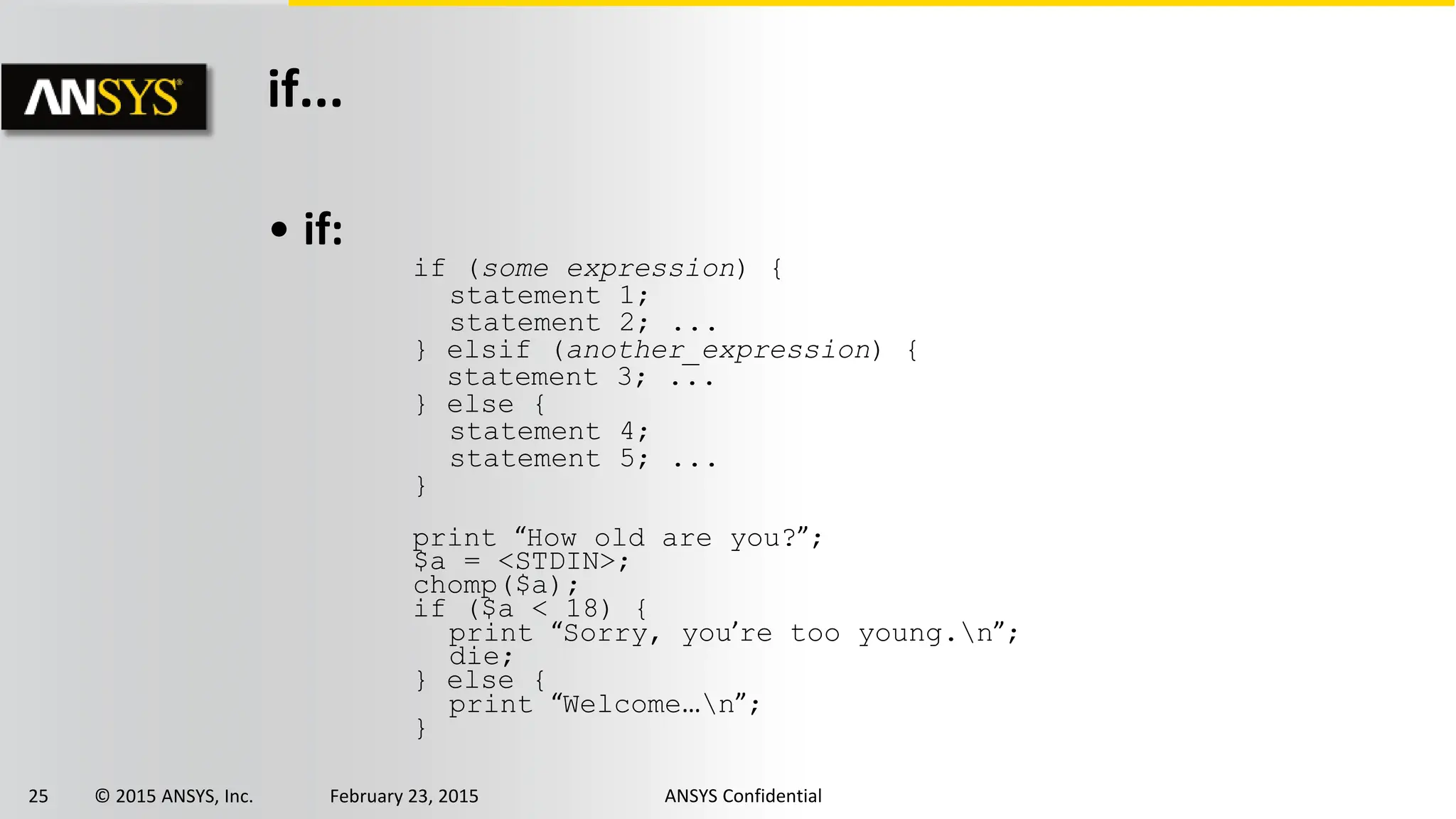
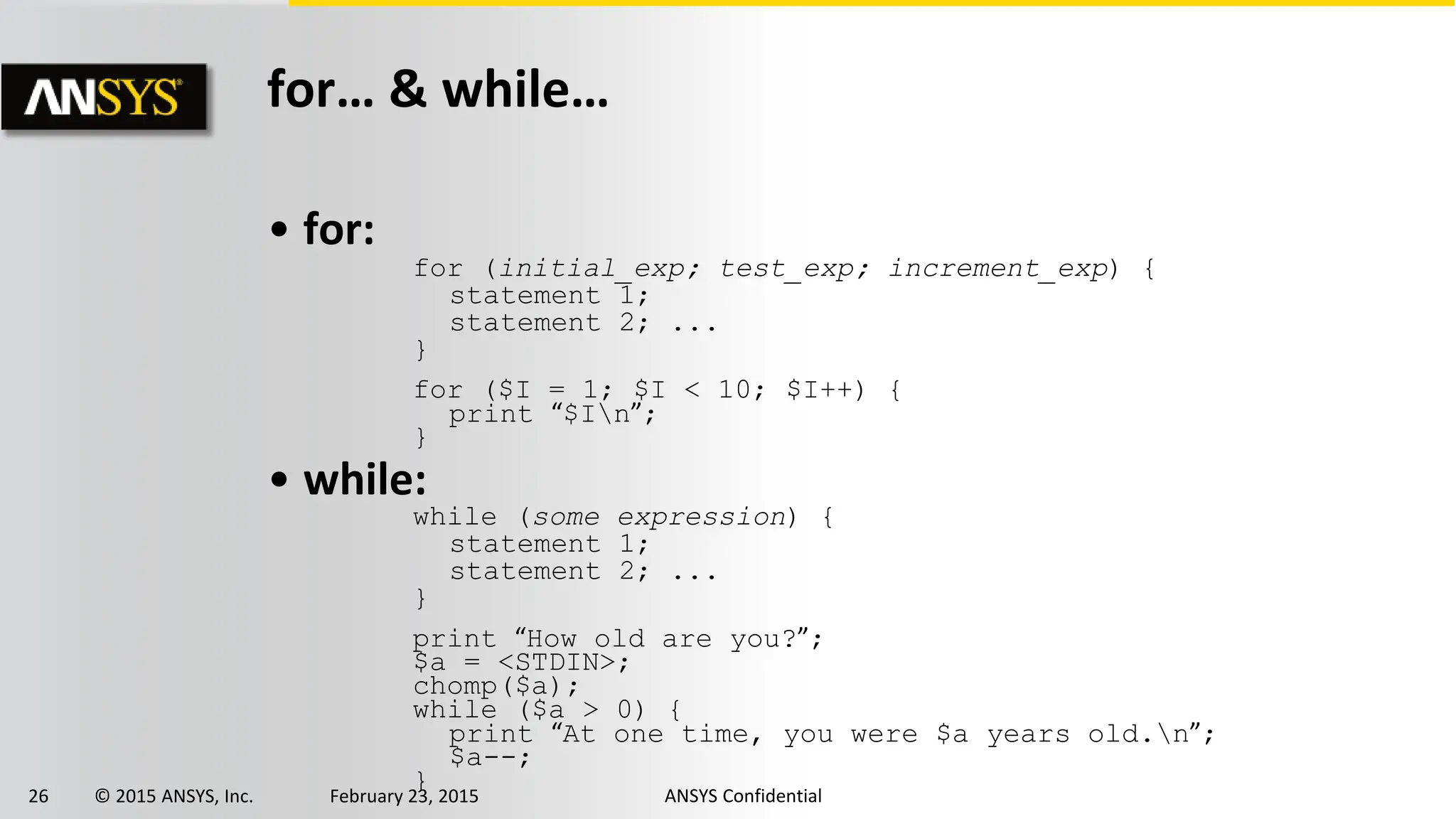
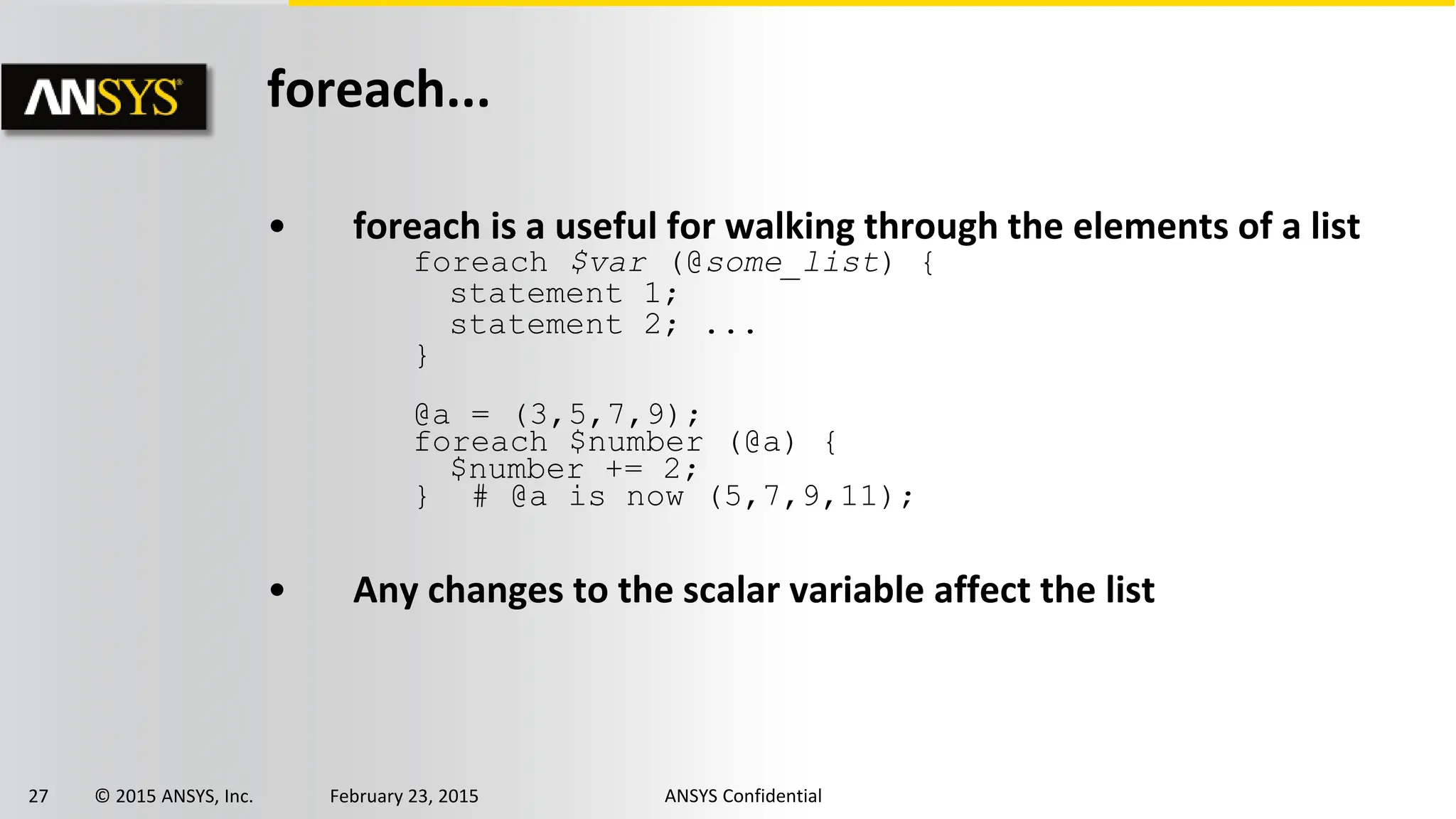
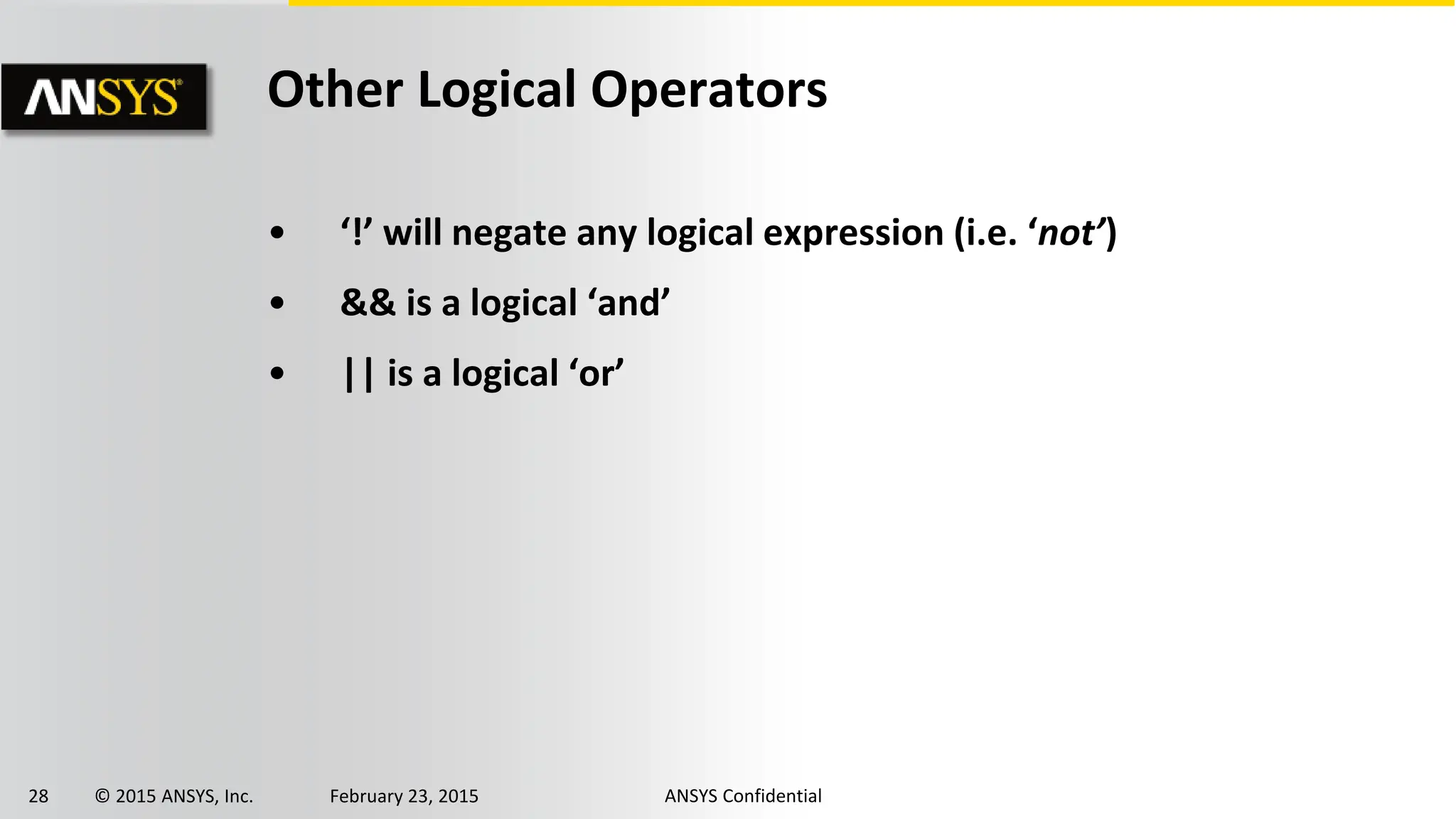
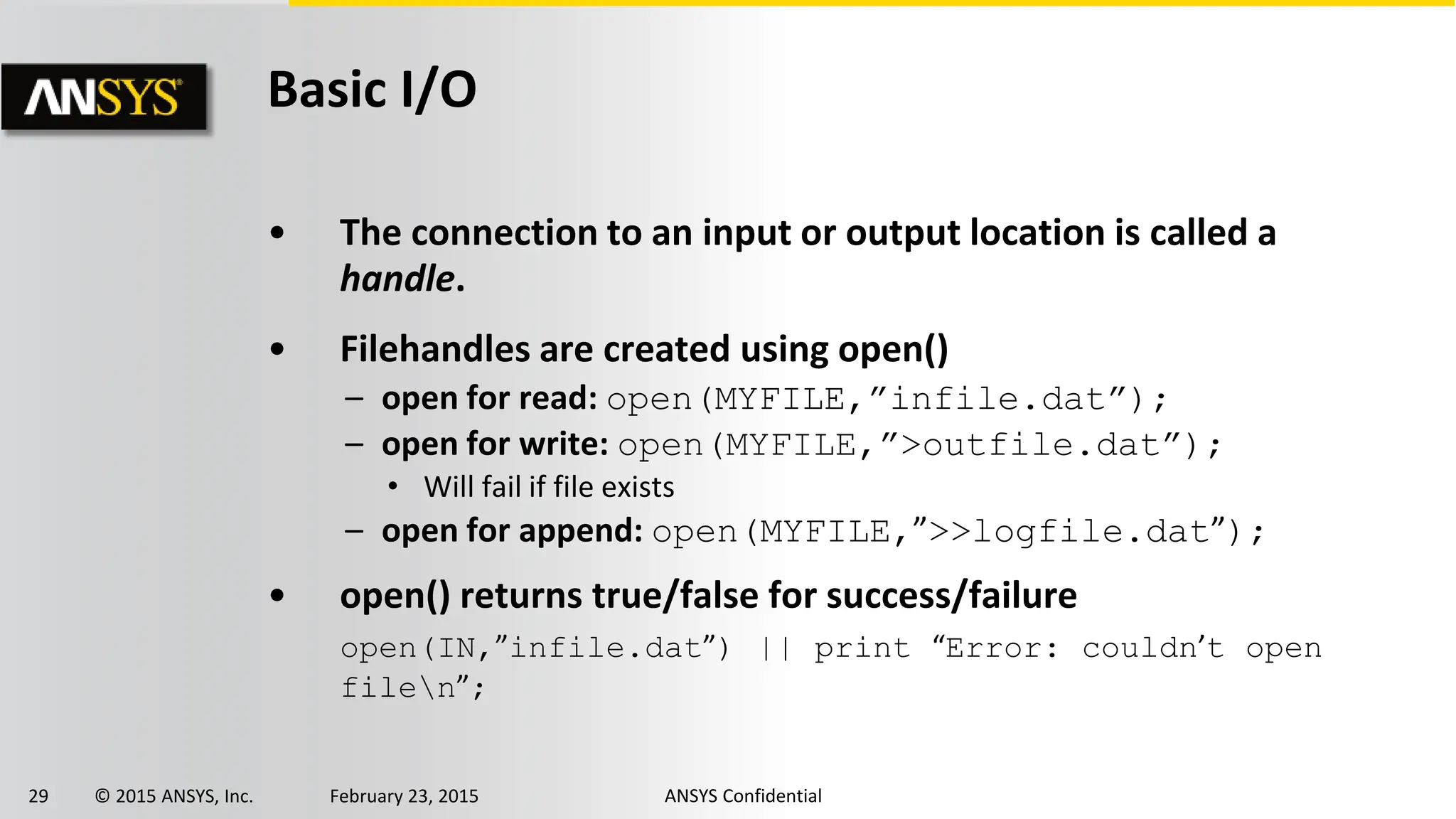
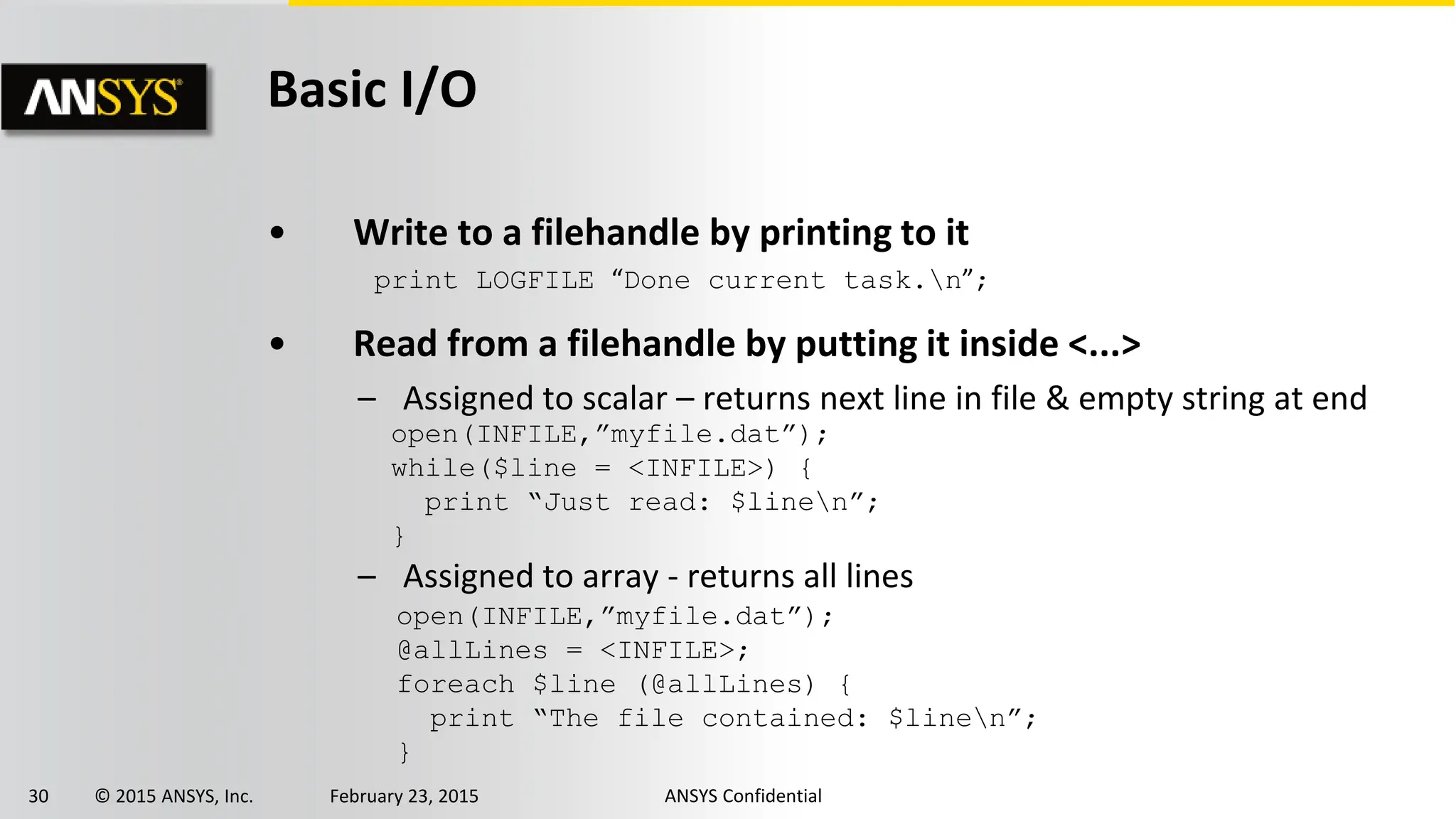
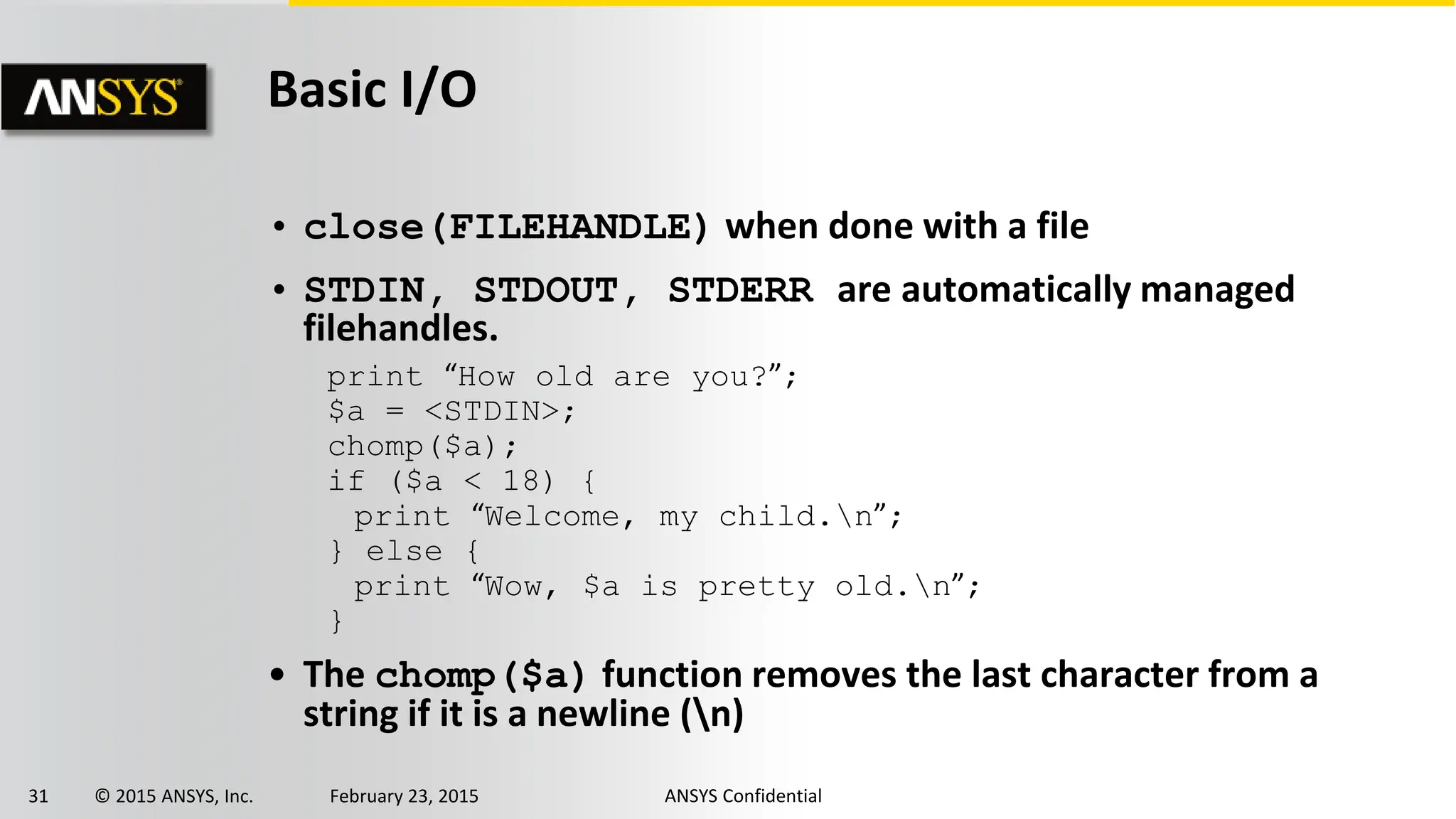
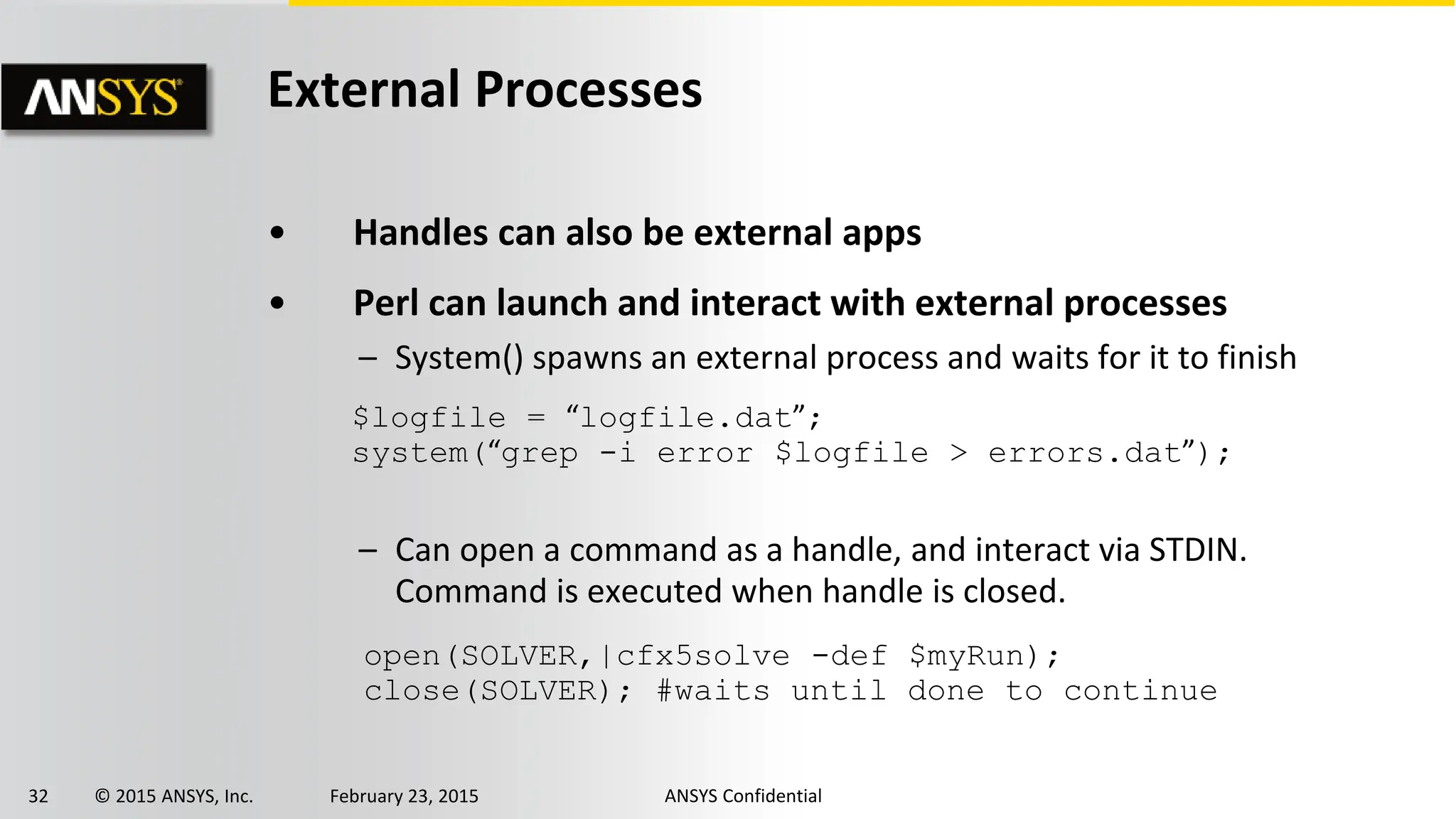
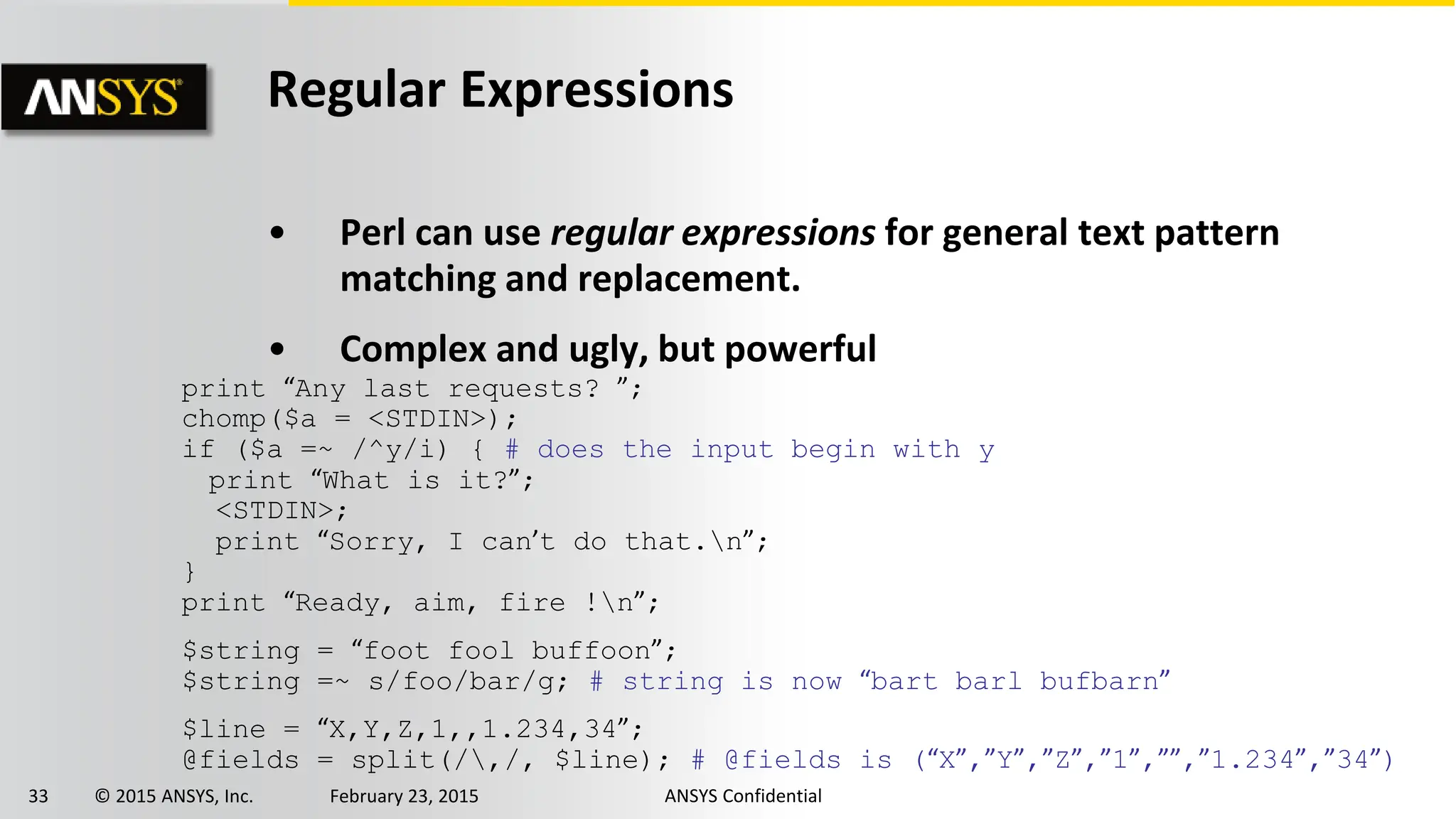
![34 © 2015 ANSYS, Inc. February 23, 2015 ANSYS Confidential
Subroutines
• Subroutines are just user defined functions. Declared with
‘sub’.
• Subroutines return one or more values from a return
statement
– … or the value of the last statement if no explicit return.
• Invoked by calling subName(args).
sub subName {
statement 1;
statement 2; [...]
}
$result = doSomething($a,$b);](https://image.slidesharecdn.com/cfxintro16-240815232057-f3ca76e8/75/CFX_Intro_16-0_App-A_Scripting_perl_cfx-pdf-34-2048.jpg)
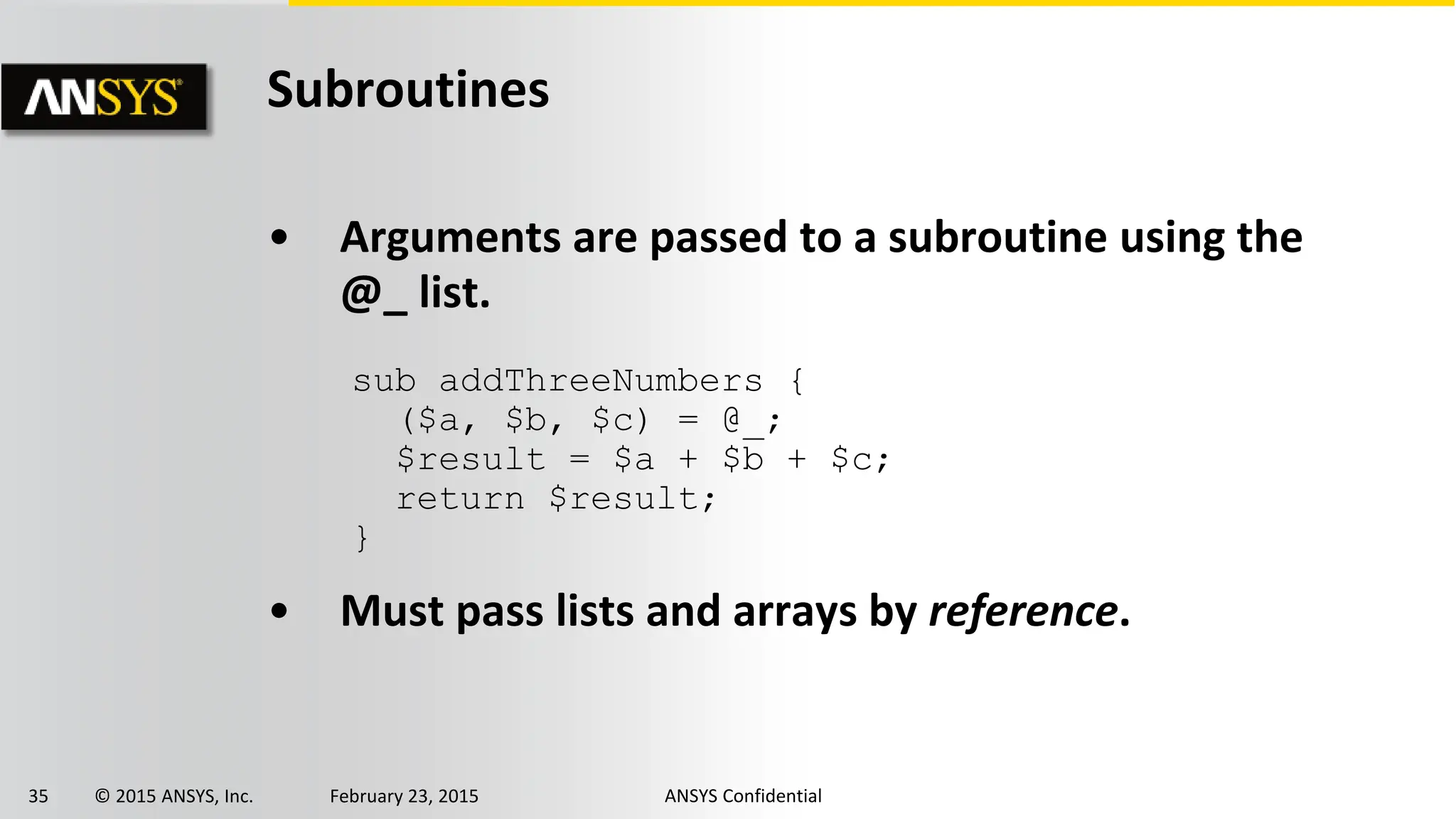
![36 © 2015 ANSYS, Inc. February 23, 2015 ANSYS Confidential
References
• Use ‘’ in front of a variable to create a scalar reference
(pointer).
– $listRef = @myList;
• De-reference by using a variable reference type ($, @ or %)
– push(@$listRef,”new Value”);
• Directly access elements in a reference using -> notation
– For arrays: $listRef->[$index]
– For hashes: $hashRef->{$key}](https://image.slidesharecdn.com/cfxintro16-240815232057-f3ca76e8/75/CFX_Intro_16-0_App-A_Scripting_perl_cfx-pdf-36-2048.jpg)
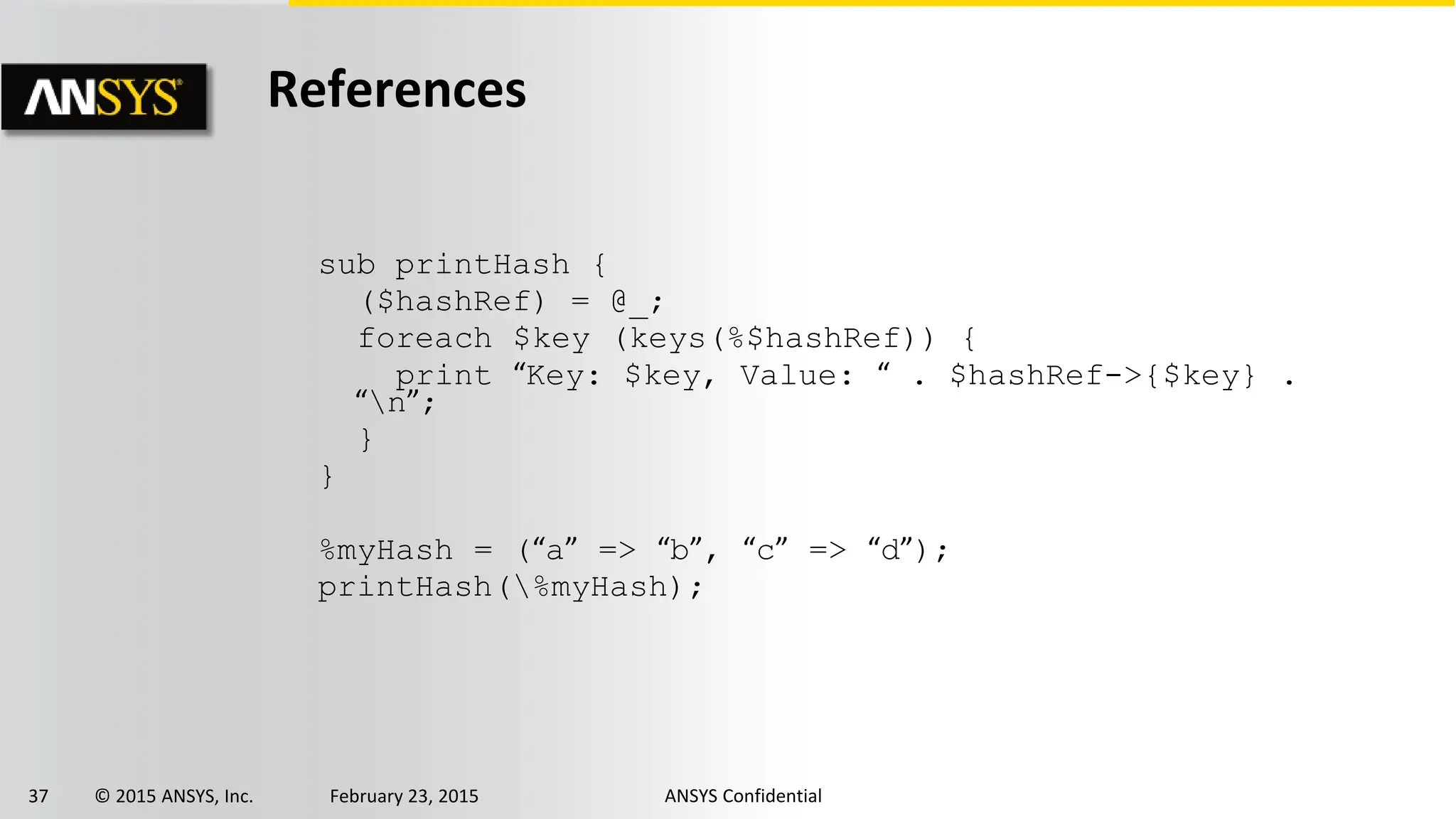
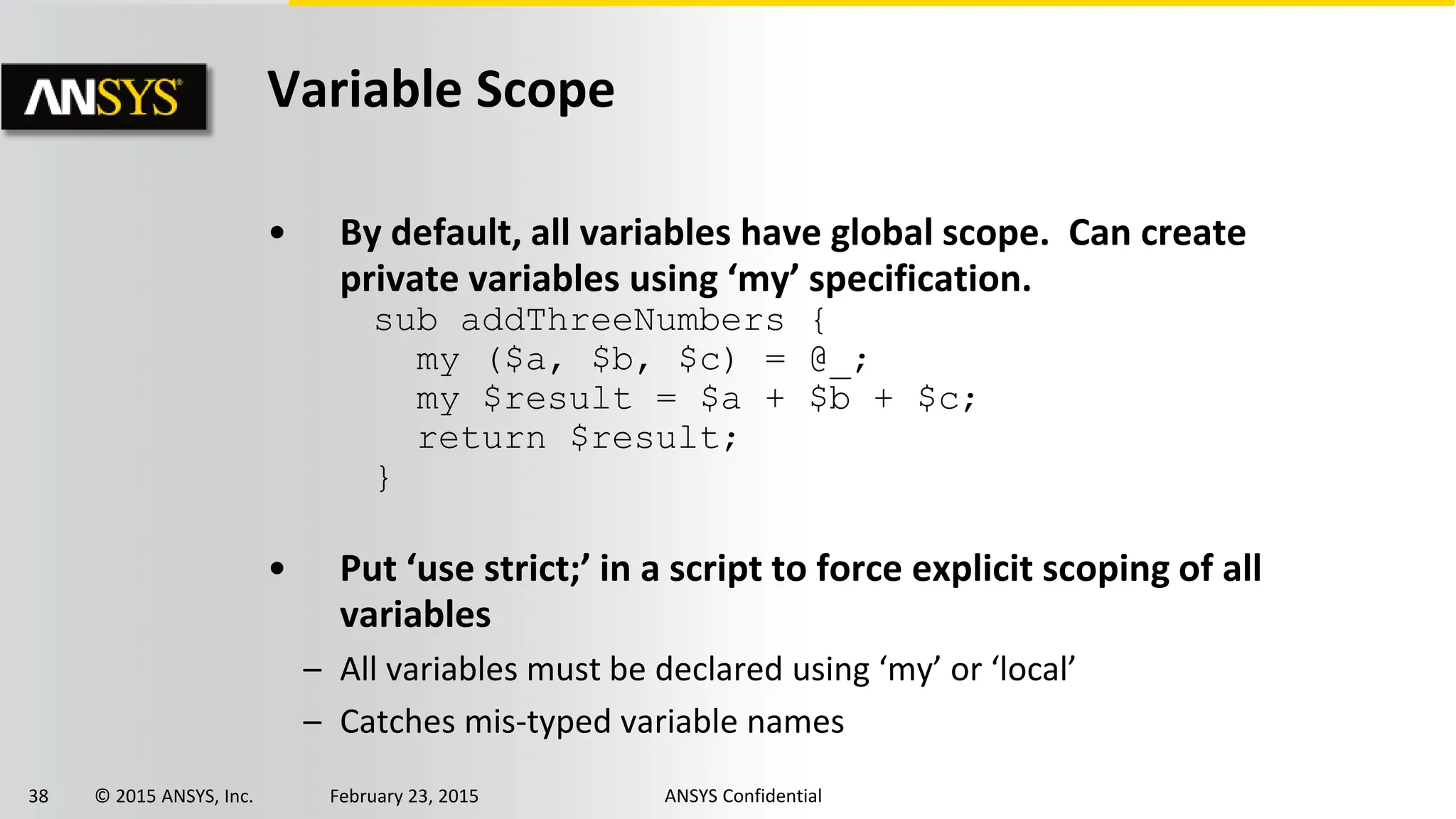
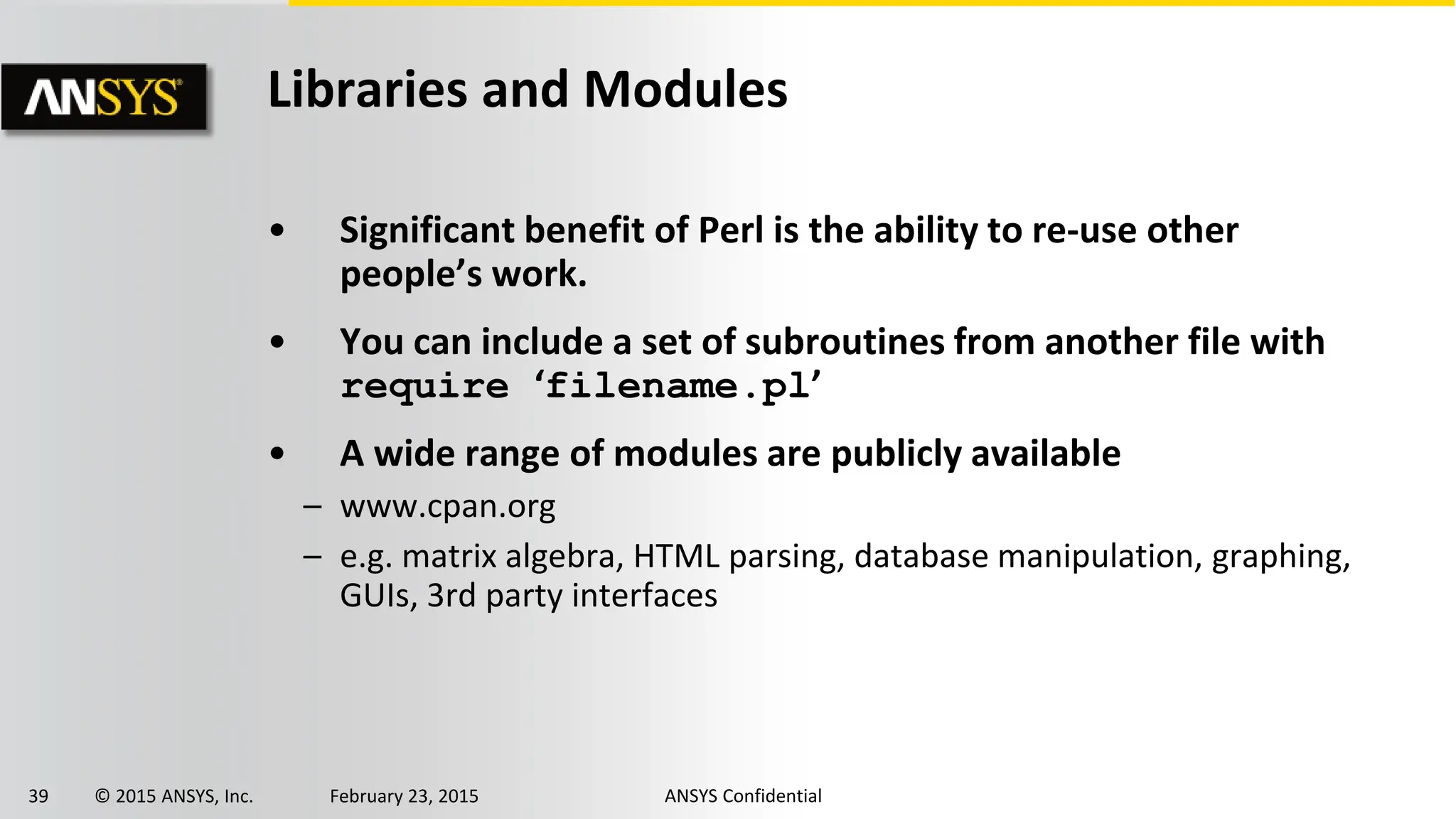
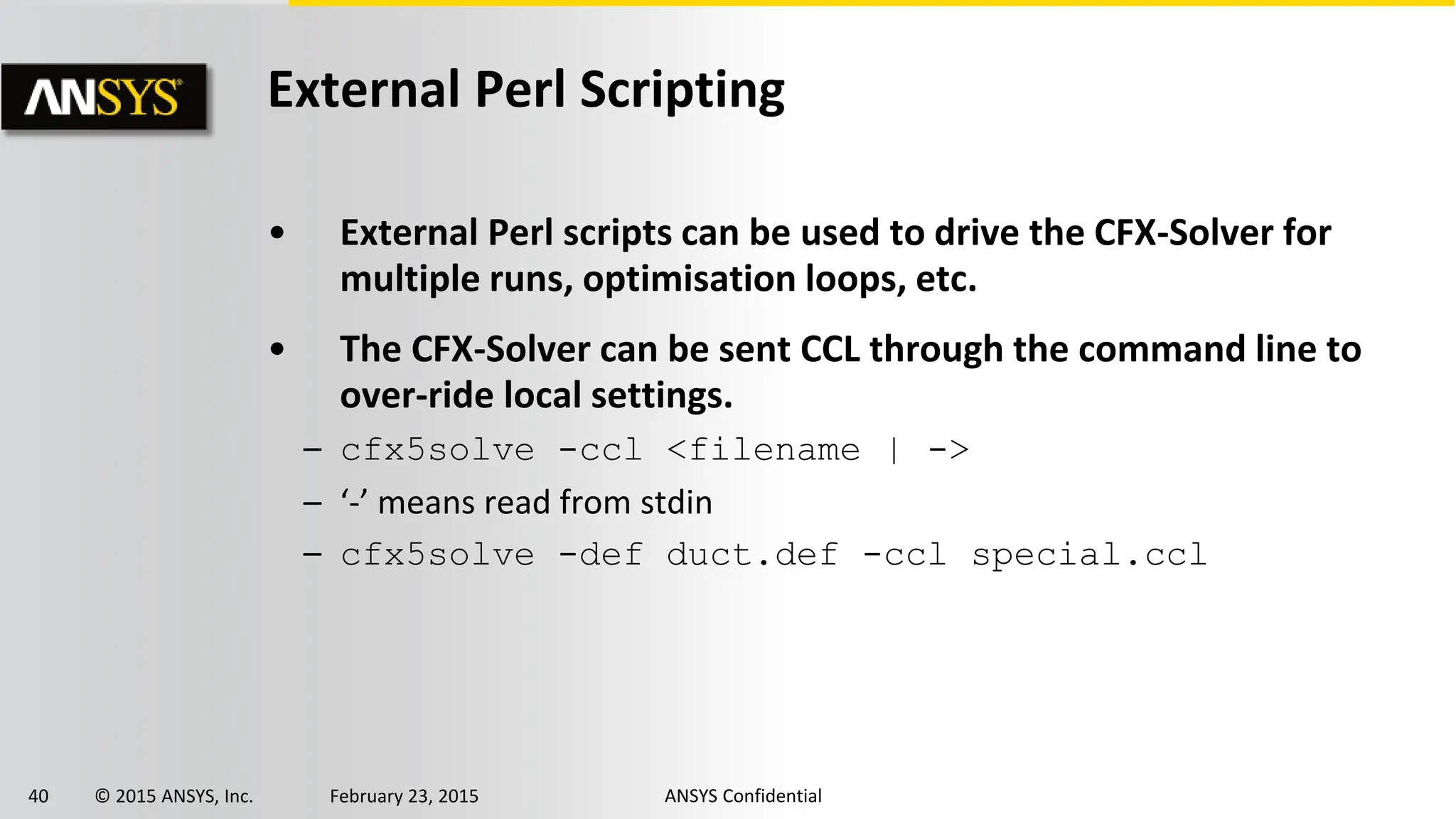
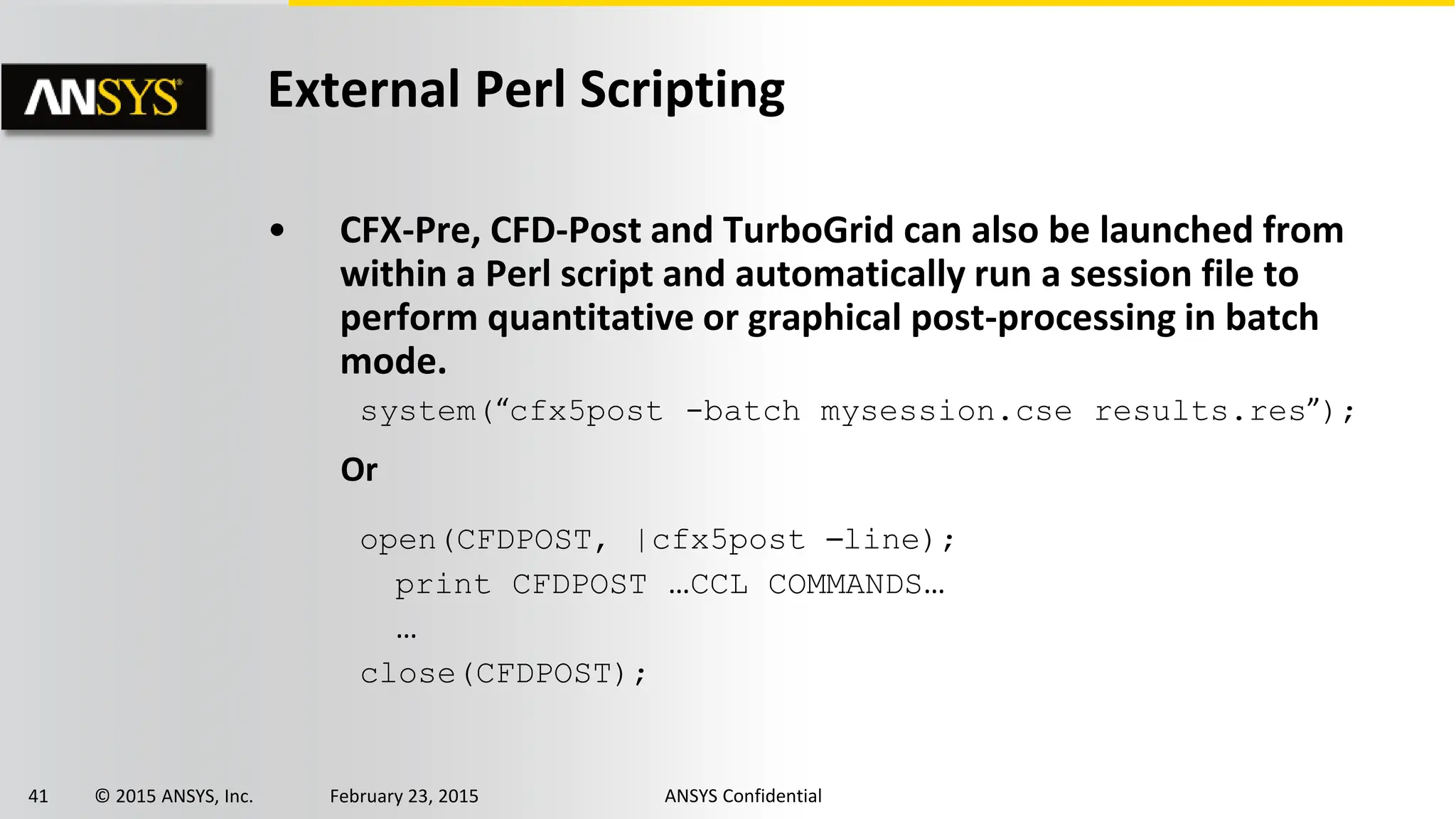
![42 © 2015 ANSYS, Inc. February 23, 2015 ANSYS Confidential
CCL & Perl
• CCL includes `Power Syntax` as a programming language
– Indicated by a “!” at the start of the line
• Power Syntax is the Perl programming language
– Full support for loops, if/then/else, subroutines and much more
! $speed = 2.0;
! if ($speed gt 1.5) {
! $turbulence = on;
! }
...
BOUNDARY: inlet1
Normal speed in = $speed [m/s]
! if ($turbulence == on) {
Eddy length scale = 0.001 [m]
! }
END
! $numSteps = 20;
! for (my $i=0; $i<=$numSteps; $i++) {
! $transparency = $i/$numSteps;
BOUNDARY:Default
Transparency = $transparency
END
!}](https://image.slidesharecdn.com/cfxintro16-240815232057-f3ca76e8/75/CFX_Intro_16-0_App-A_Scripting_perl_cfx-pdf-42-2048.jpg)
